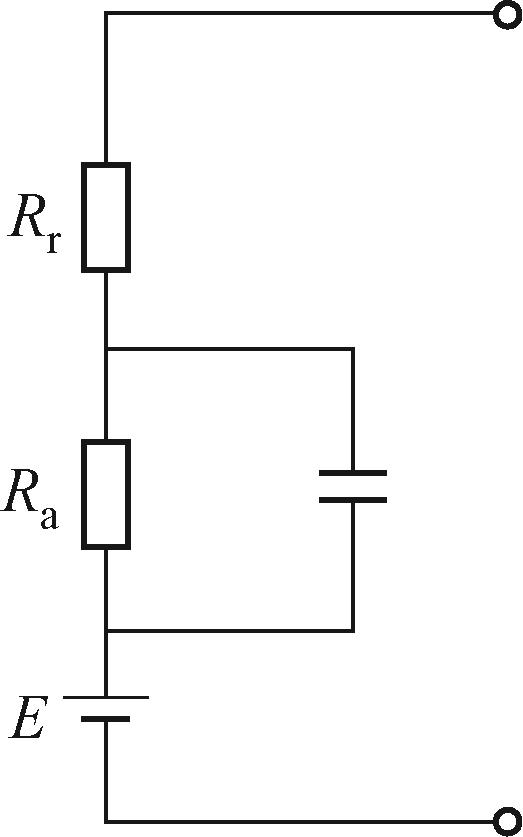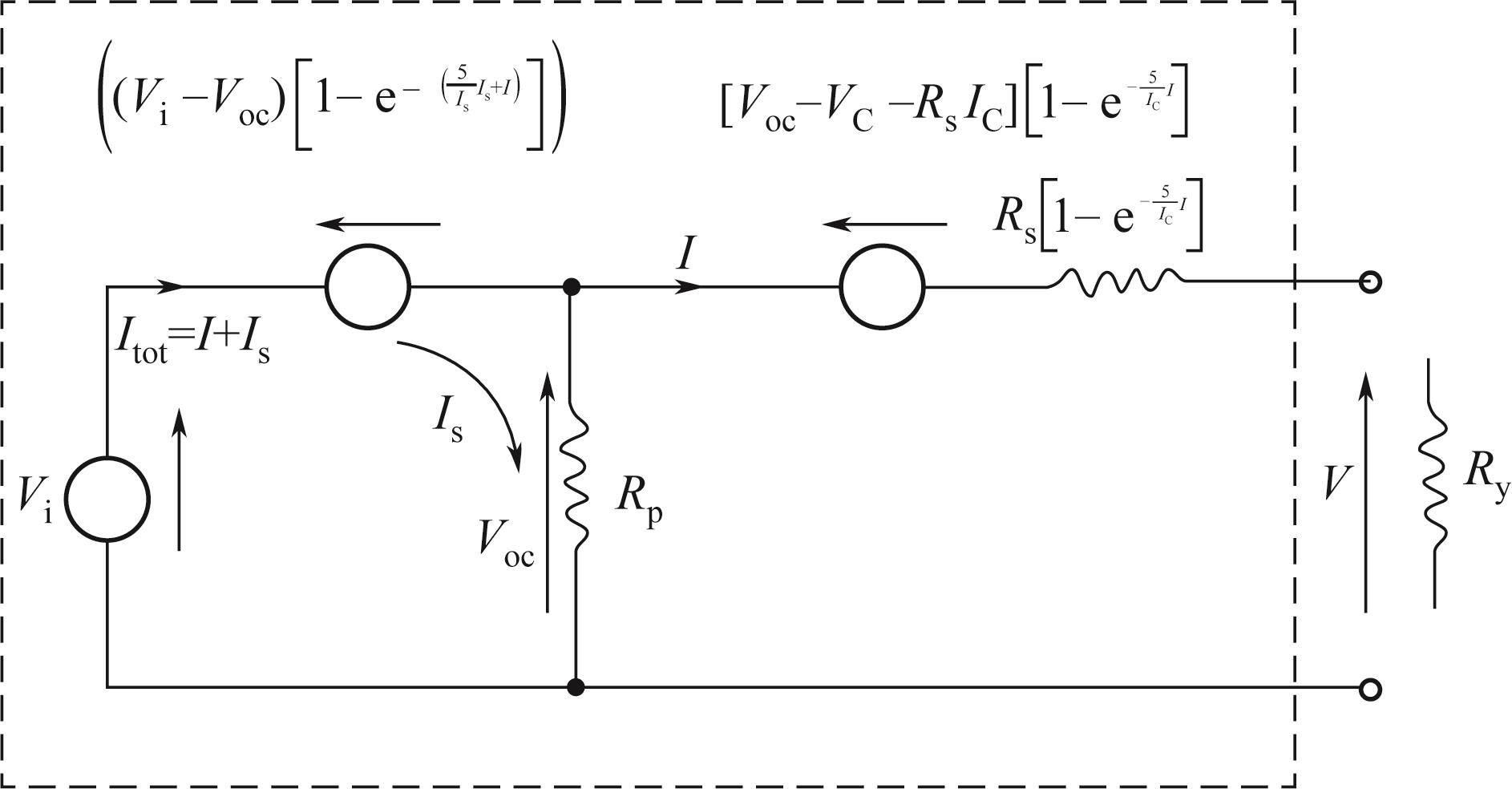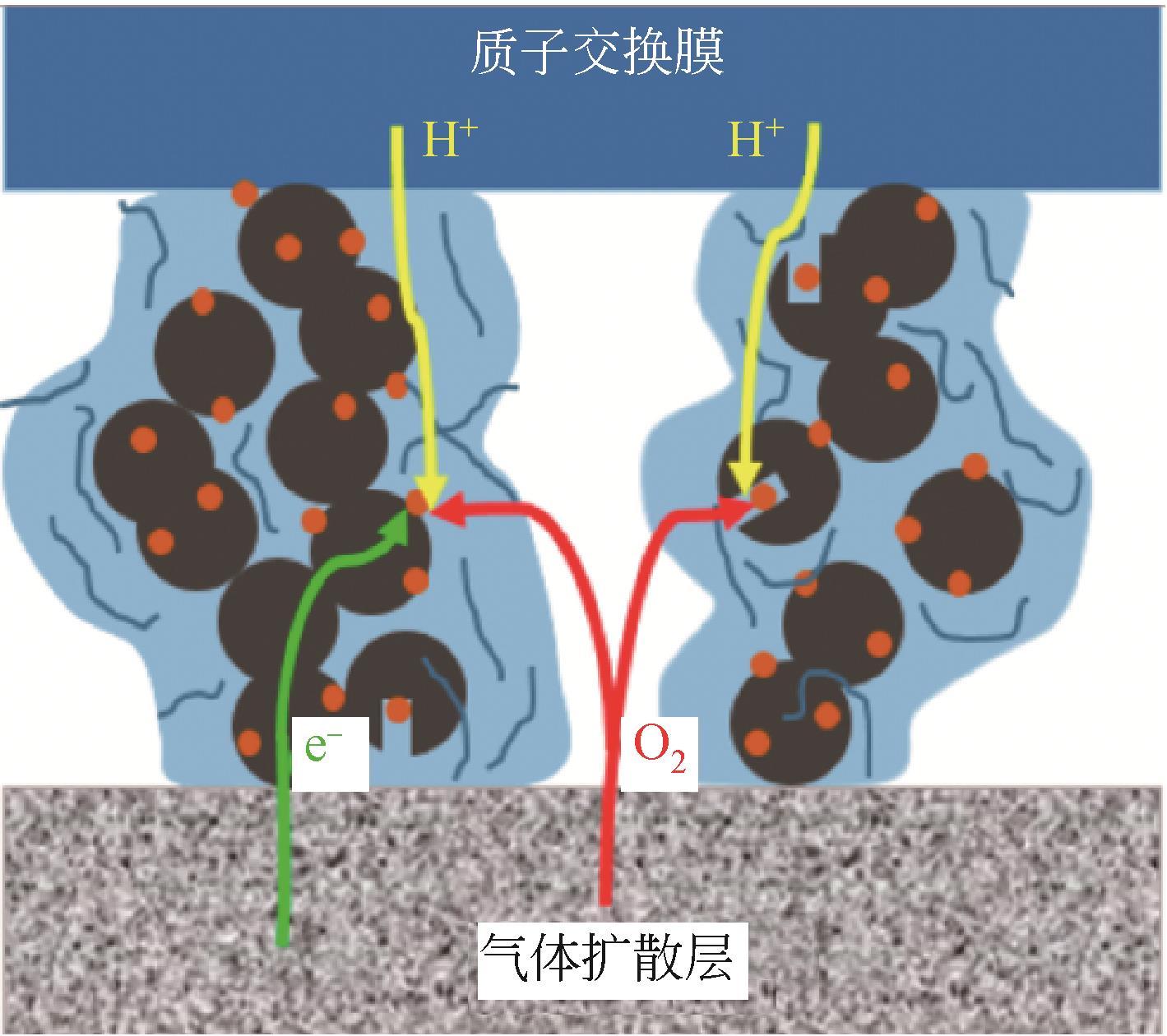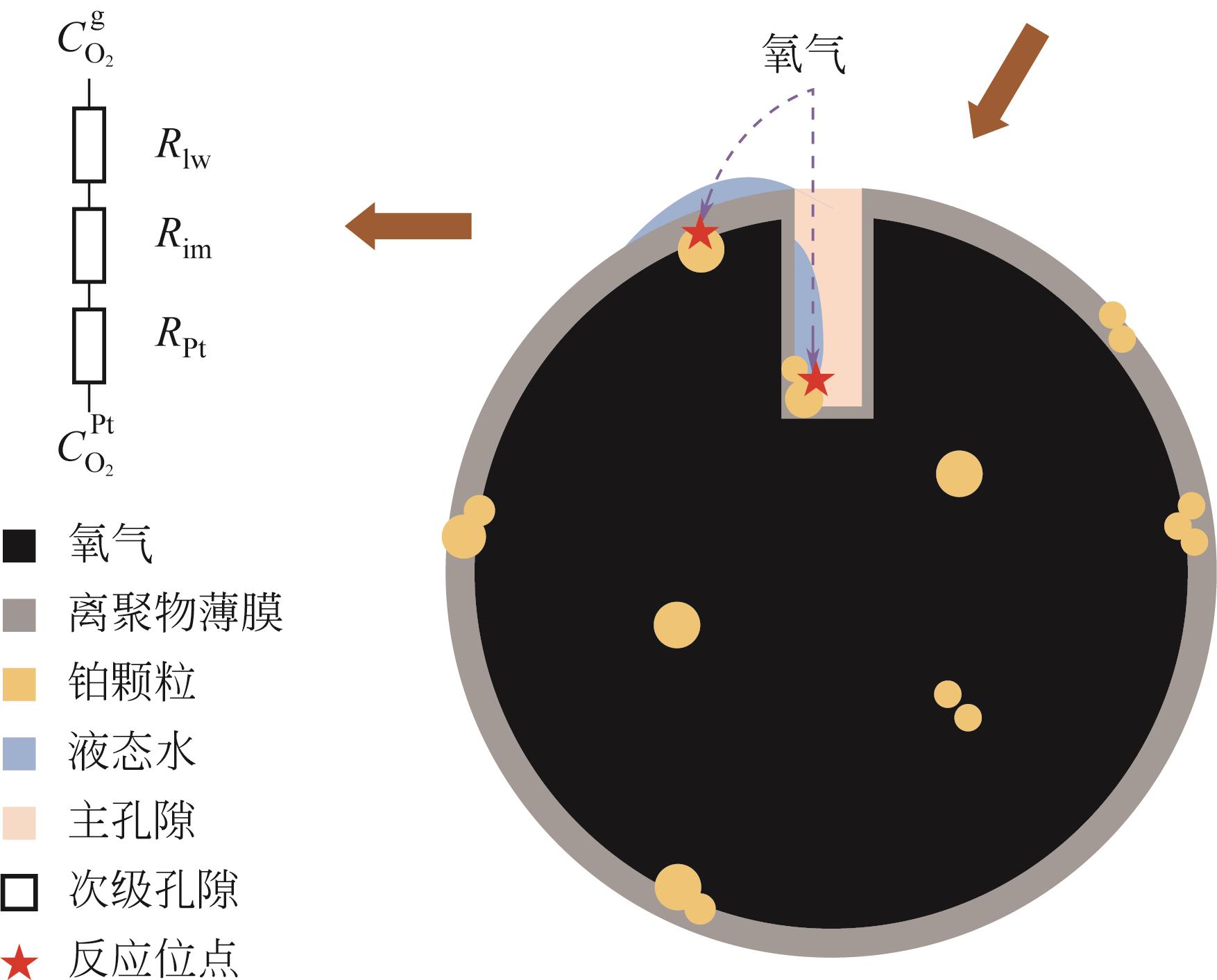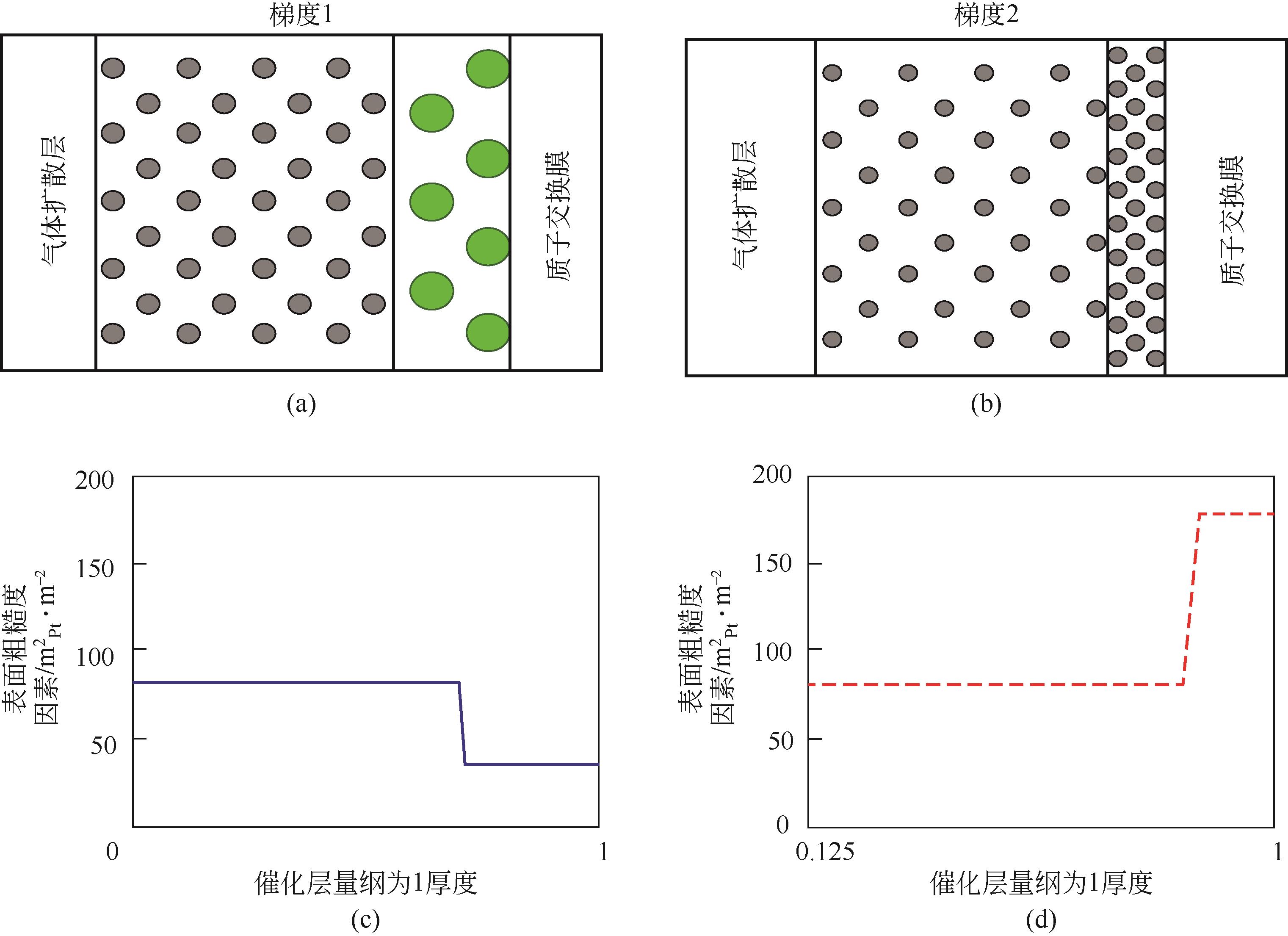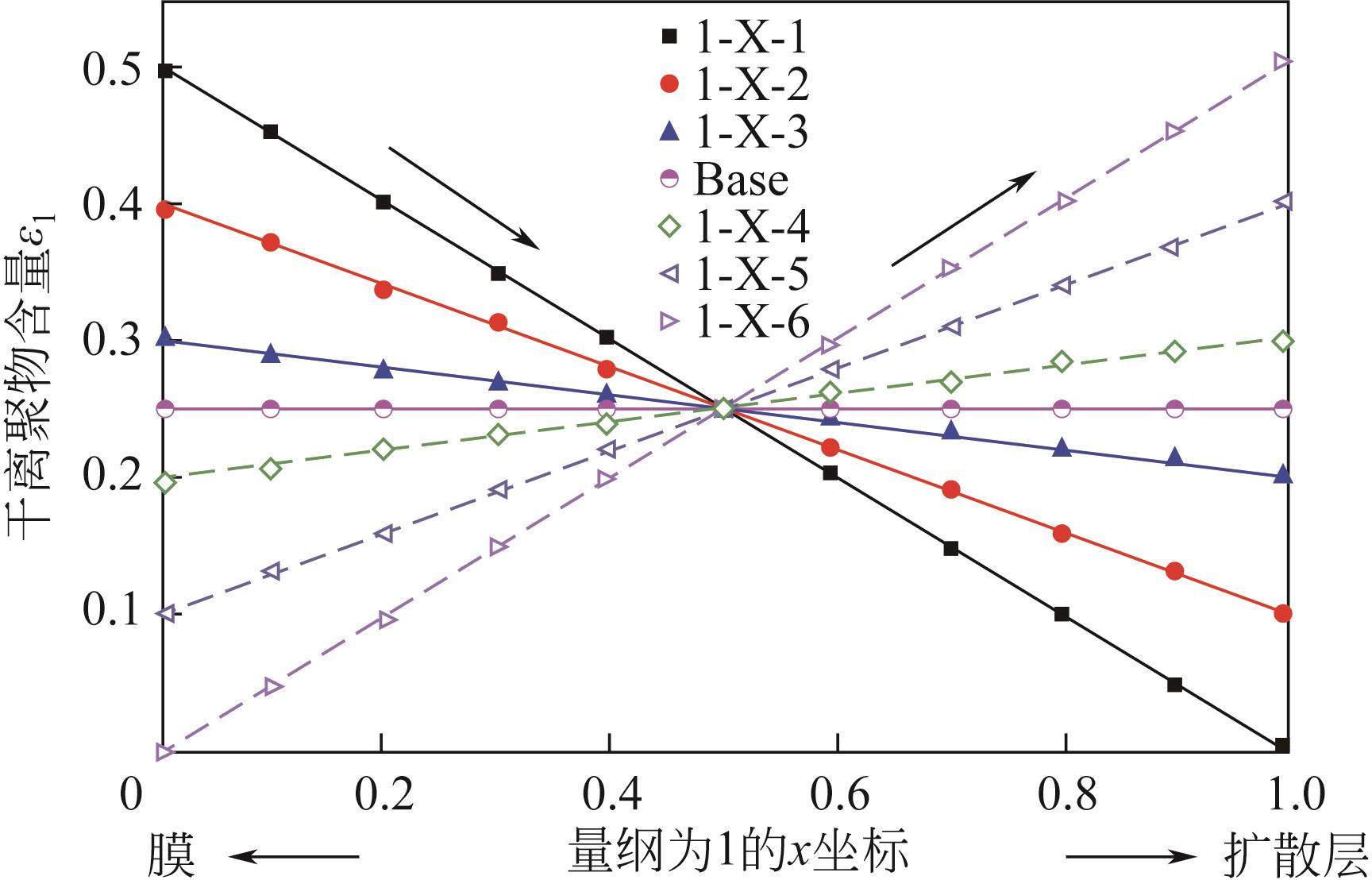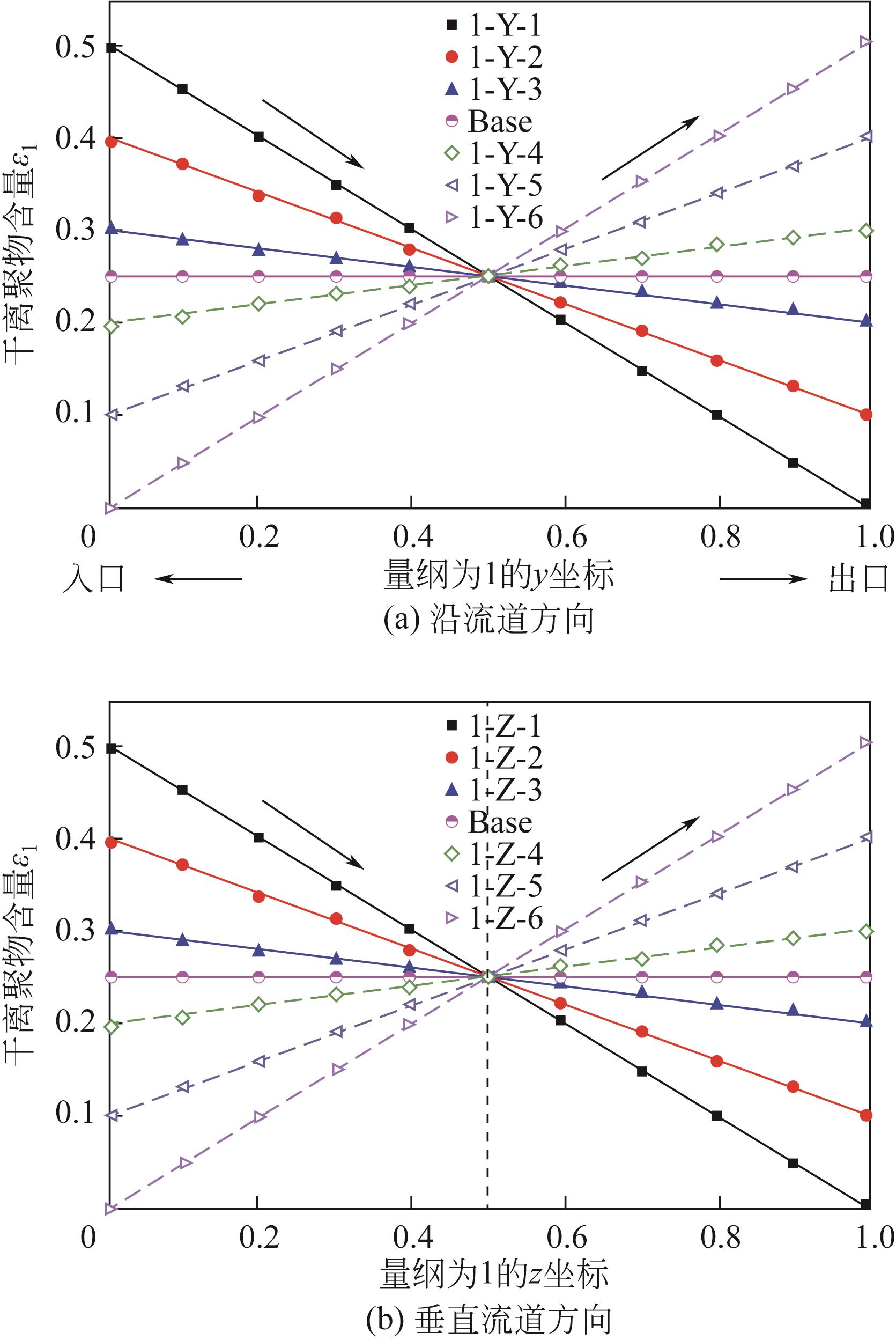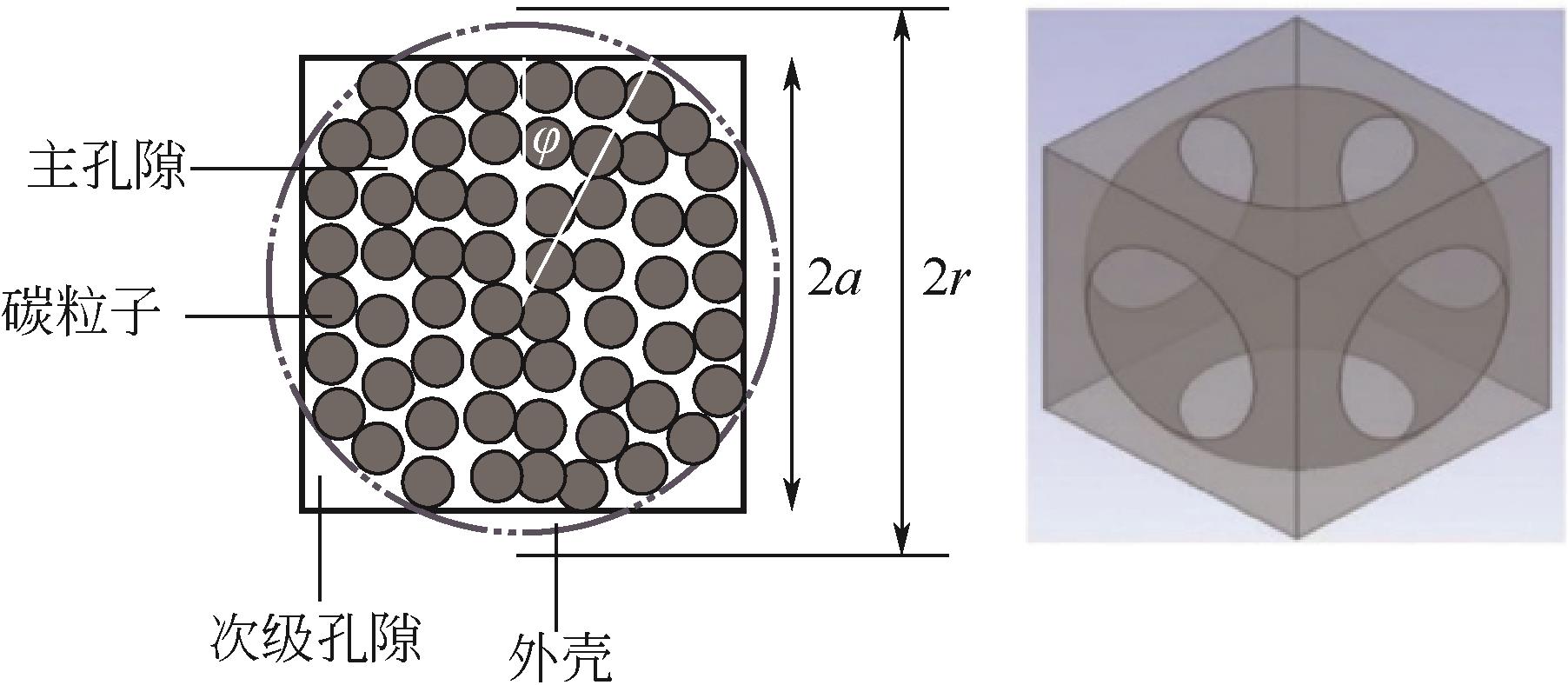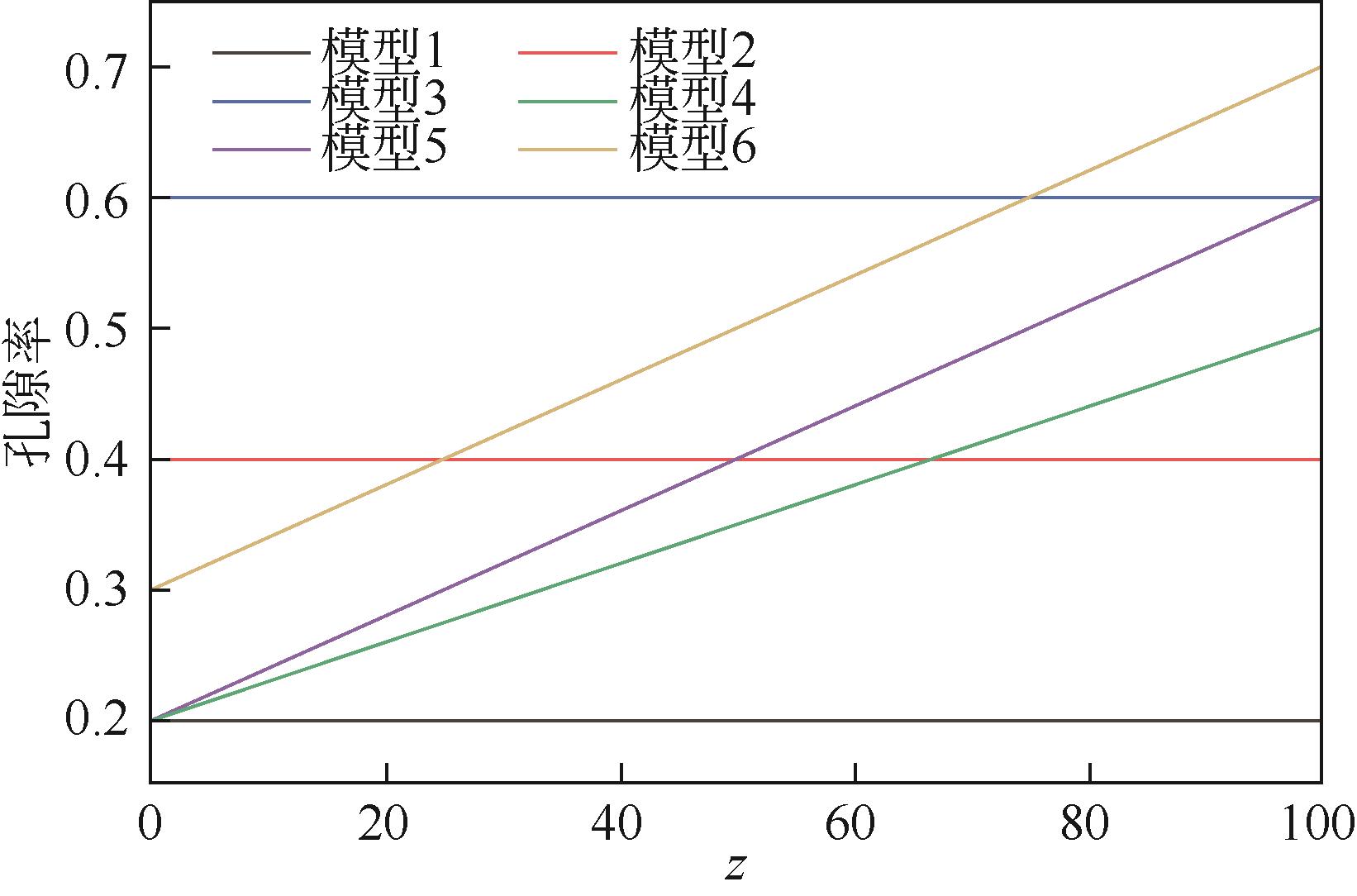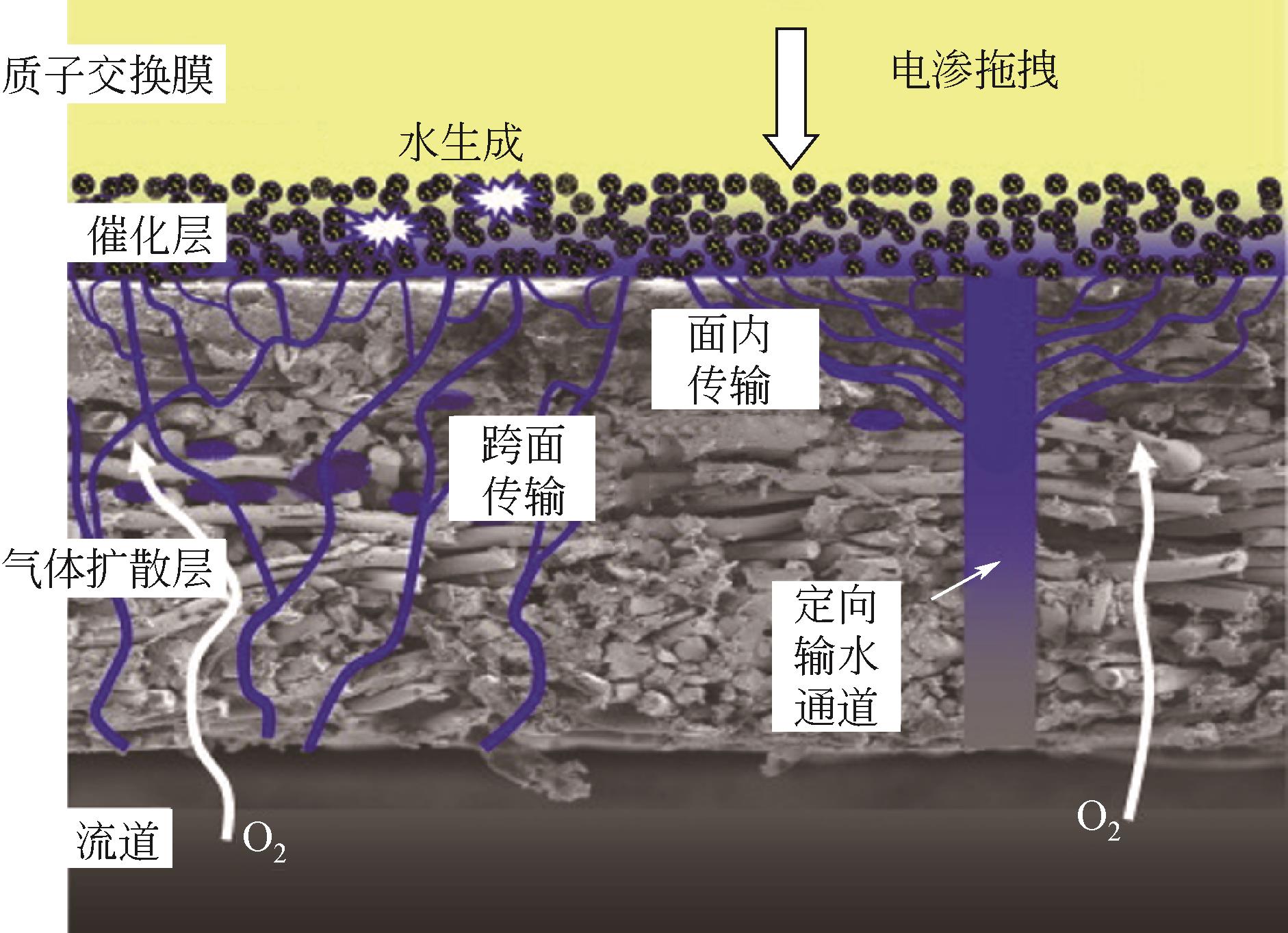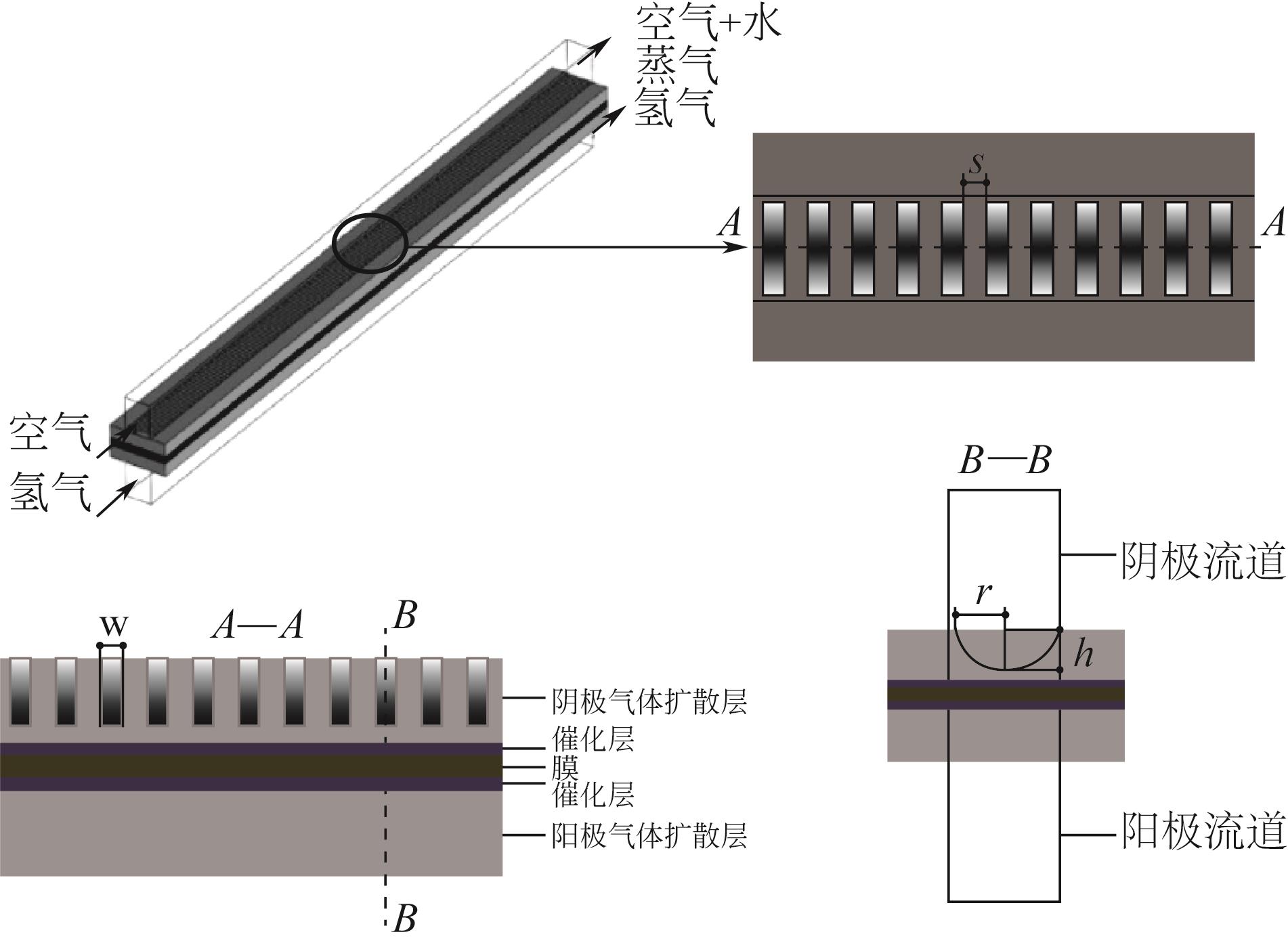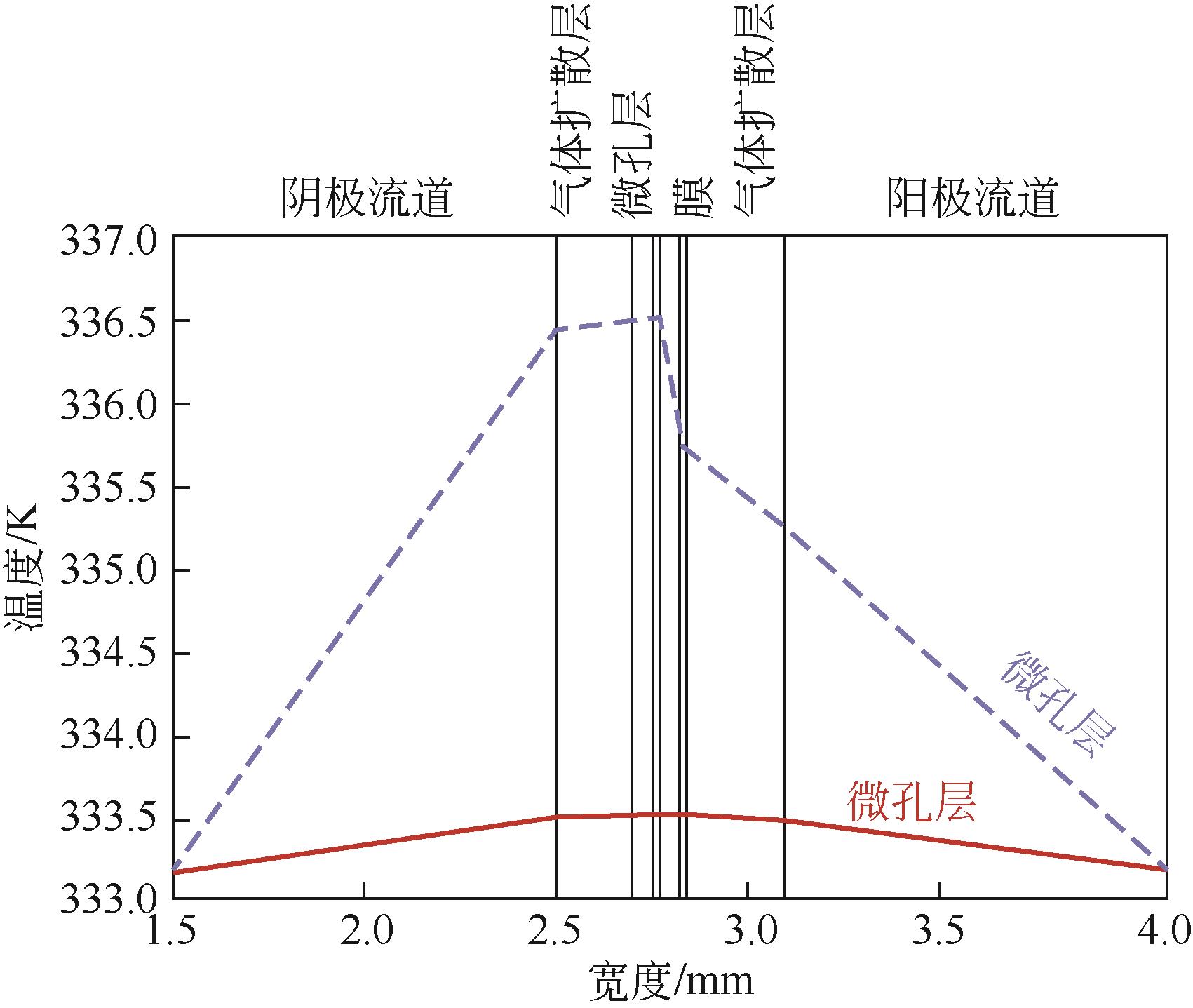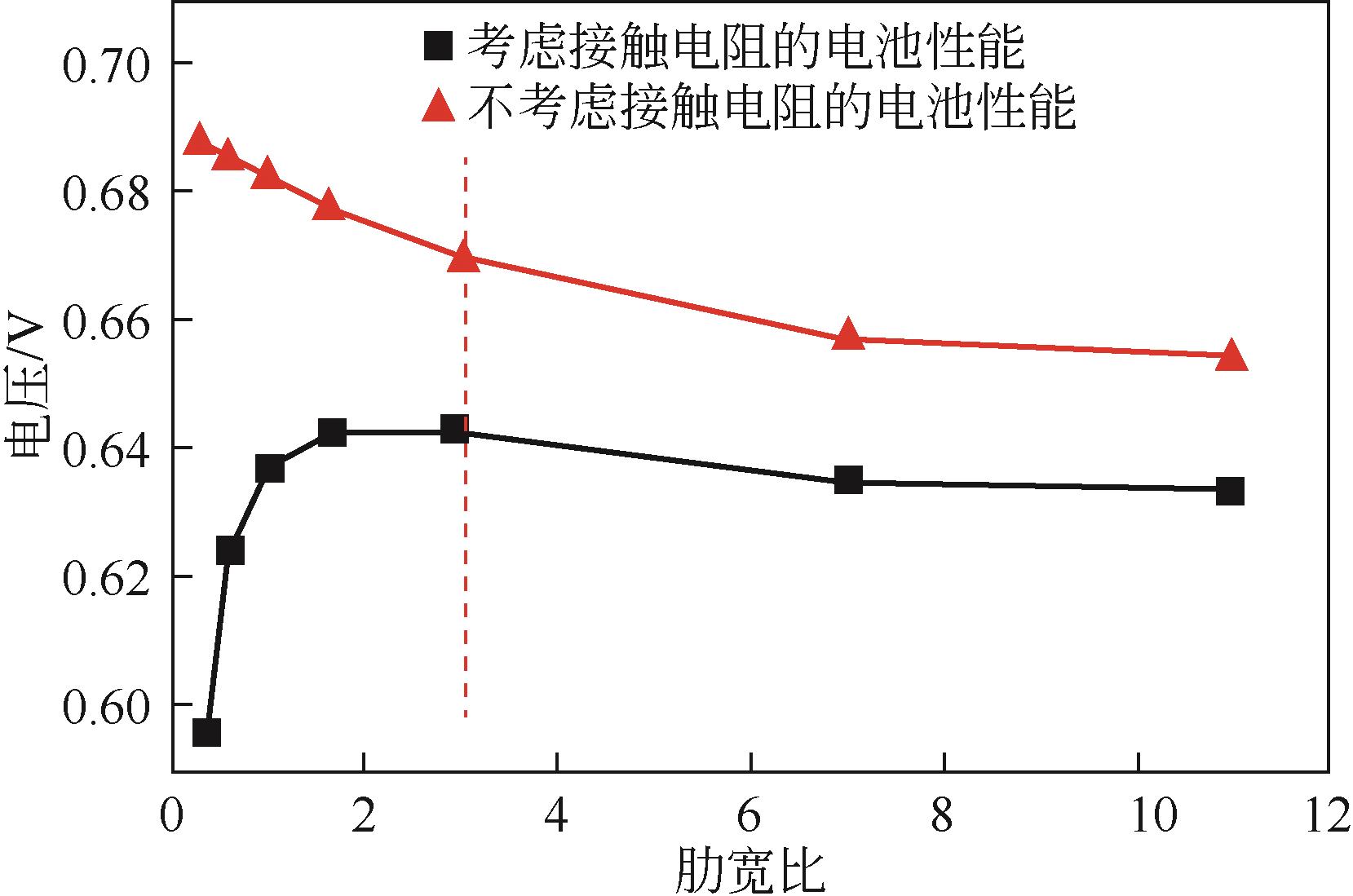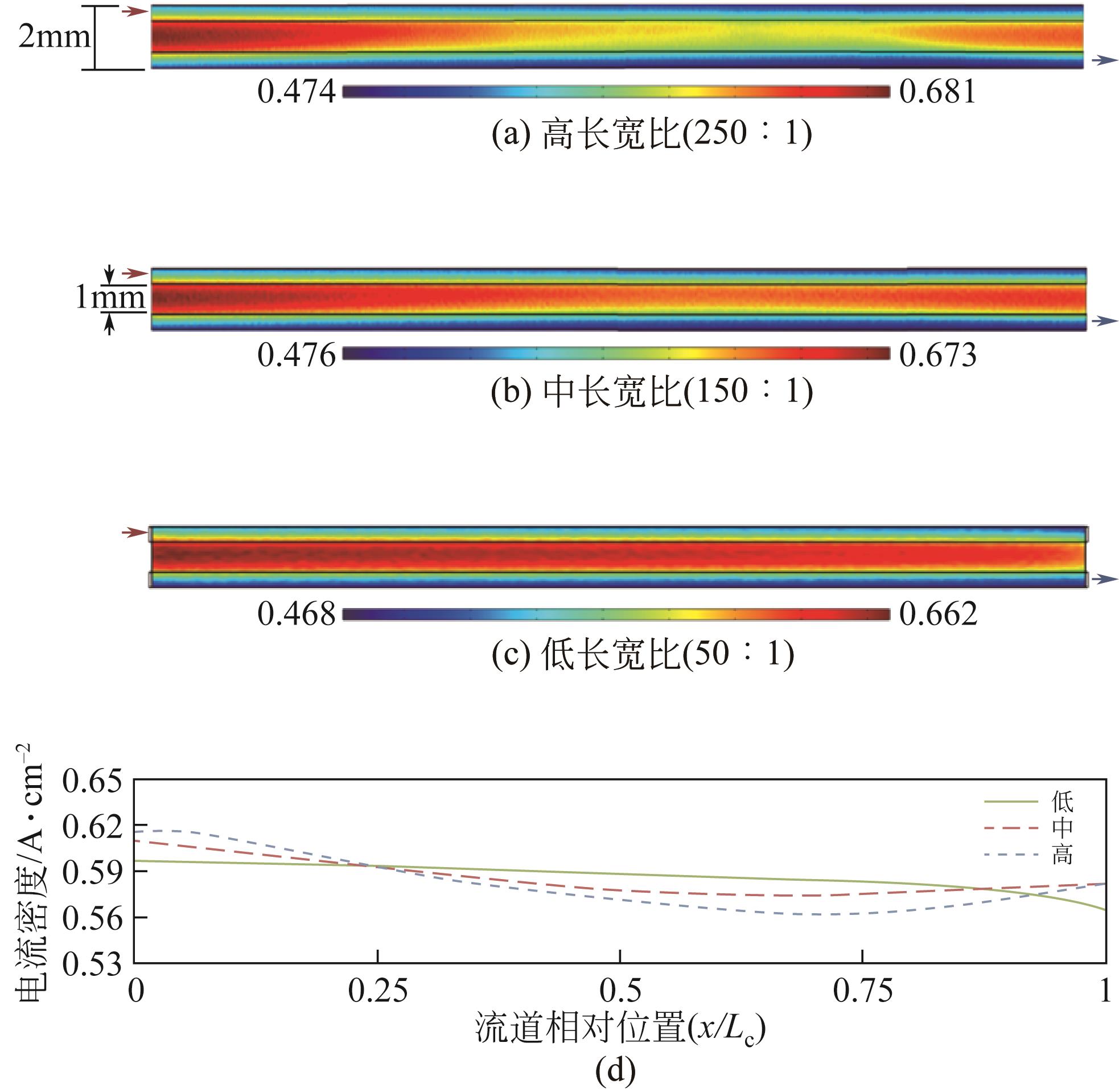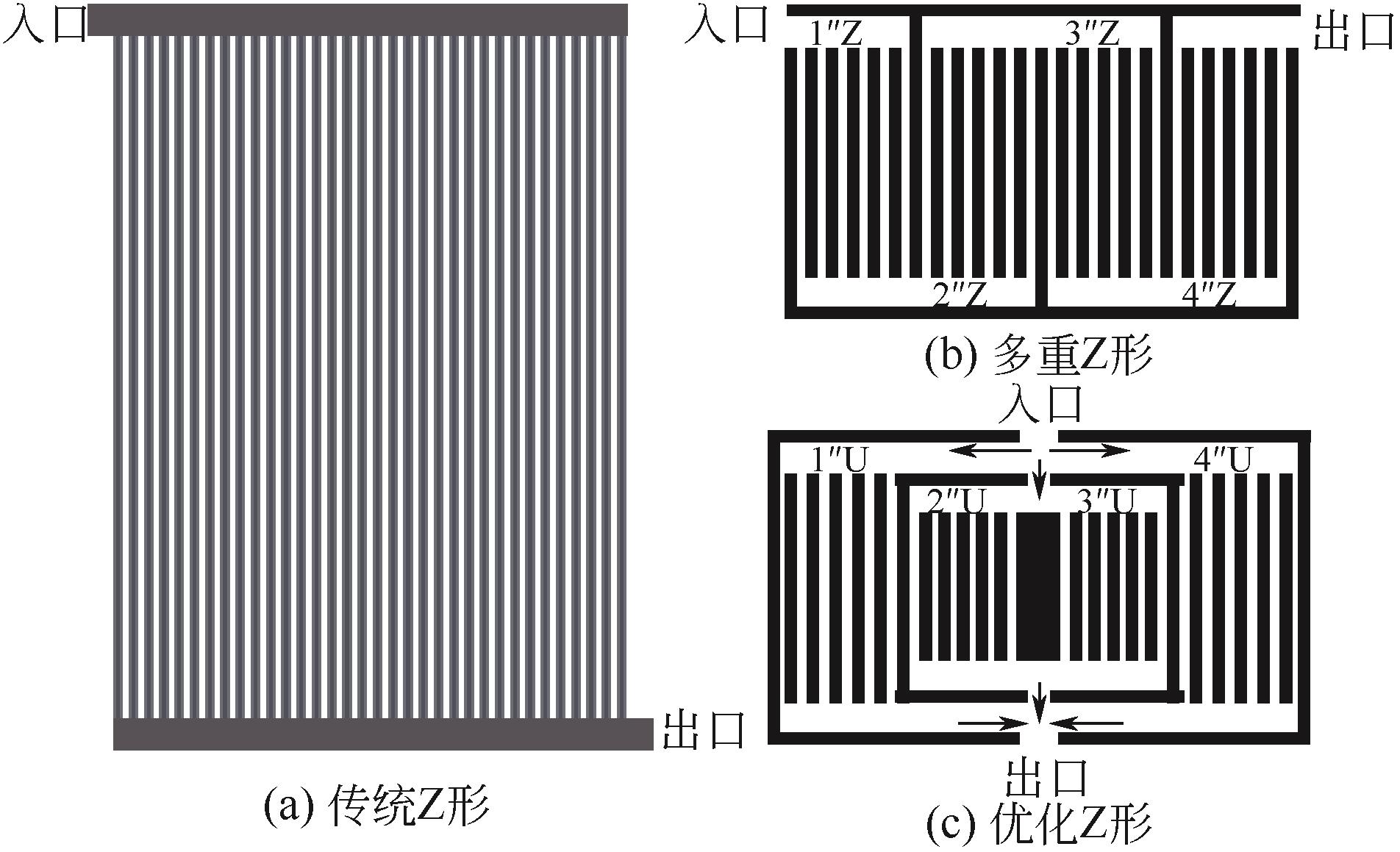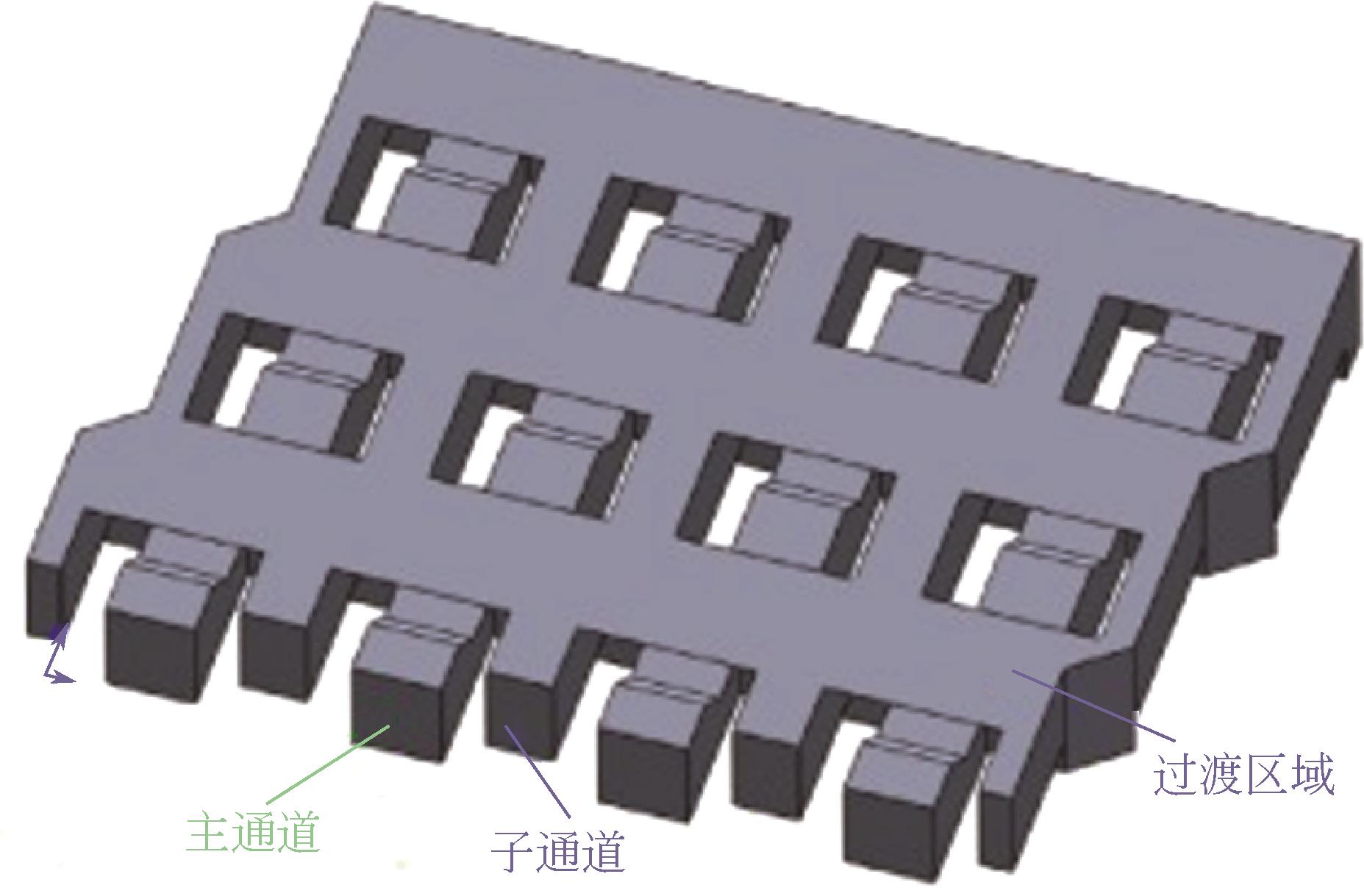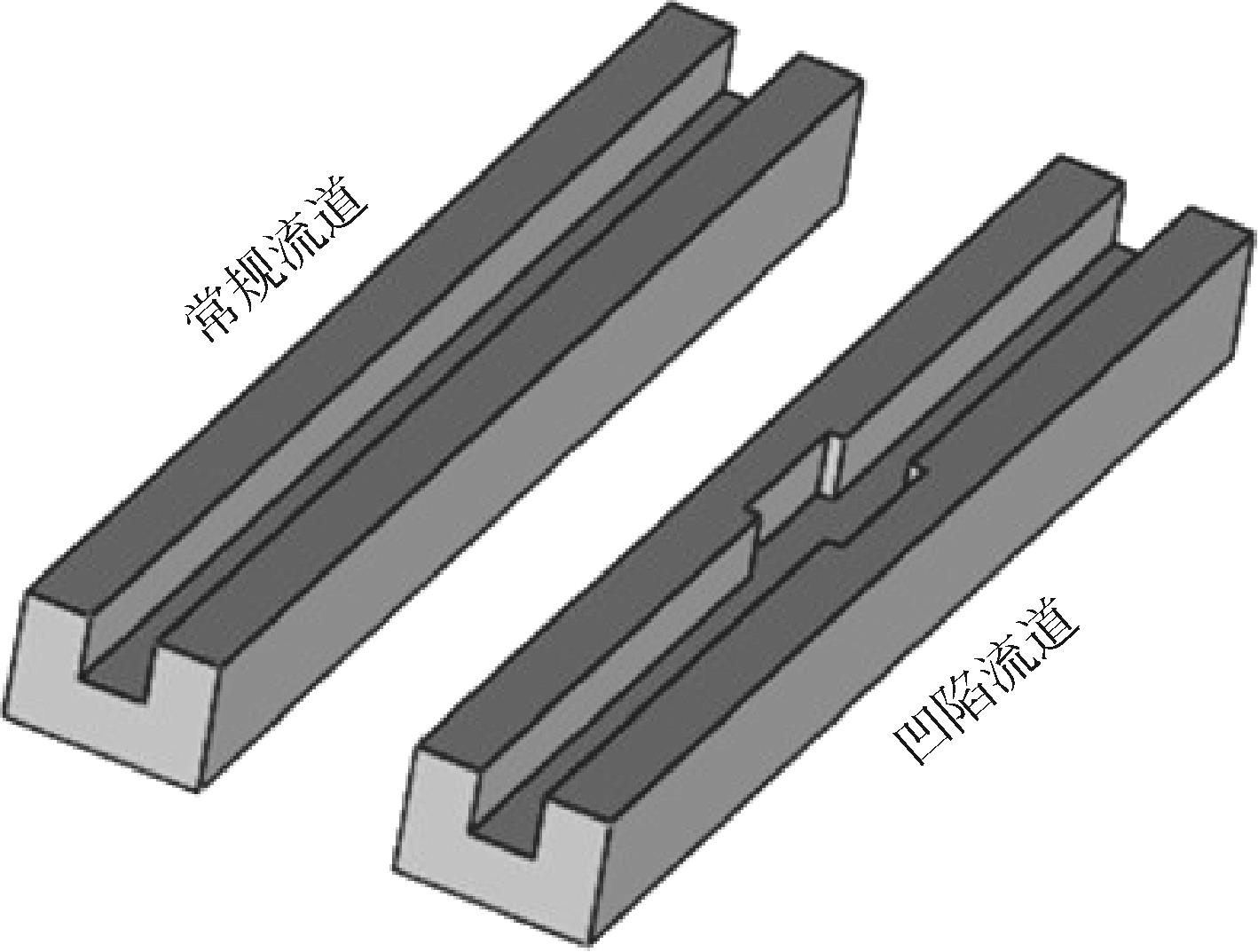Chemical Industry and Engineering Progress ›› 2022, Vol. 41 ›› Issue (10): 5272-5296.DOI: 10.16085/j.issn.1000-6613.2021-2604
• Energy processes and technology • Previous Articles Next Articles
Research progress of simulation models of proton exchange membrane fuel cell
- School of Energy and Power Engineering, Huazhong University of Science and Technology, Wuhan 430074, Hubei,China
-
Received:2021-12-22Revised:2022-02-27Online:2022-10-21Published:2022-10-20 -
Contact:TU Zhengkai
质子交换膜燃料电池仿真模型研究进展
- 华中科技大学能源与动力工程学院,湖北 武汉 430074
-
通讯作者:涂正凯 -
作者简介:李政翰(1996—),男,硕士研究生,研究方向为燃料电池。E-mail:M201971061@hust.edu.cn。 -
基金资助:国家重点研发计划;国家自然科学基金(52076069)
CLC Number:
Cite this article
LI Zhenghan, TU Zhengkai. Research progress of simulation models of proton exchange membrane fuel cell[J]. Chemical Industry and Engineering Progress, 2022, 41(10): 5272-5296.
李政翰, 涂正凯. 质子交换膜燃料电池仿真模型研究进展[J]. 化工进展, 2022, 41(10): 5272-5296.
share this article
Add to citation manager EndNote|Ris|BibTeX
URL: https://hgjz.cip.com.cn/EN/10.16085/j.issn.1000-6613.2021-2604
| 作者 | Pt分布策略 | 效果 |
|---|---|---|
| Havaej等[ | 1.3-0.6x | 性能提升3.1% |
| (1.3-0.6x)(-5.944y2+5.944y+0.001) | 性能提升8% | |
| Ebrahimi等[ | 1.53x5-14.09x4-4.69x3+ 10.31x2-2.7731x+0.34 | 性能提升7% |
| Sabzpoushan等[ | h(x)=1-t×(2x-L)/L (L为流道长度) | t=-0.2时性能提升1.8% |
| 作者 | Pt分布策略 | 效果 |
|---|---|---|
| Havaej等[ | 1.3-0.6x | 性能提升3.1% |
| (1.3-0.6x)(-5.944y2+5.944y+0.001) | 性能提升8% | |
| Ebrahimi等[ | 1.53x5-14.09x4-4.69x3+ 10.31x2-2.7731x+0.34 | 性能提升7% |
| Sabzpoushan等[ | h(x)=1-t×(2x-L)/L (L为流道长度) | t=-0.2时性能提升1.8% |
| 流场 | 温度不均匀指数 | 最大温差/K |
|---|---|---|
| 平行流场 | 9.02 | 11.70 |
| 波浪形流场 | 8.87 | 11.53 |
| 三维流场 | 27.32 | 24.63 |
| 流场 | 温度不均匀指数 | 最大温差/K |
|---|---|---|
| 平行流场 | 9.02 | 11.70 |
| 波浪形流场 | 8.87 | 11.53 |
| 三维流场 | 27.32 | 24.63 |
| 55 | KOMINI BABU Siddharth, CHUNG Hoon T, ZELENAY Piotr, et al. Resolving electrode morphology’s impact on platinum group metal-free cathode performance using nano-CT of 3D hierarchical pore and ionomer distribution[J]. ACS Applied Materials & Interfaces, 2016, 8(48): 32764-32777. |
| 56 | Komini BABU S, CHUNG H T, ZELENAY P, et al. Modeling electrochemical performance of the hierarchical morphology of precious group metal-free cathode for polymer electrolyte fuel cell[J]. Journal of the Electrochemical Society, 2017, 164(9): F1037-F1049. |
| 57 | HERDEN Susanne, RIEWALD Felix, HIRSCHFELD Julian A, et al. In-plane structuring of proton exchange membrane fuel cell cathodes: effect of ionomer equivalent weight structuring on performance and current density distribution[J]. Journal of Power Sources, 2017, 355: 36-43. |
| 58 | FURUYA Yoshihisa, IDEN Hiroshi, MASHIO Tetsuya, et al. Effect of ionomer coverage on Pt-based catalyst on ORR activity[J]. ECS Meeting Abstracts, 2012, (40): 1522. |
| 59 | EBENEZER D, HARIDOSS Prathap. Effect of crosslinked poly(vinyl alcohol)/sulfosuccinic acid ionomer loading on PEMFC electrode performance[J]. International Journal of Hydrogen Energy, 2017, 42(7): 4302-4310. |
| 60 | HE Pu, CHEN Li, MU Yutong, et al. Modeling of the effect of ionomer volume fraction on water management for proton exchange membrane fuel cell[J]. Energy Procedia, 2019, 158: 2139-2144. |
| 61 | ISHIKAWA H, SUGAWARA Y, INOUE G, et al. Effects of Pt and ionomer ratios on the structure of catalyst layer: a theoretical model for polymer electrolyte fuel cells[J]. Journal of Power Sources, 2018, 374: 196-204. |
| 62 | CARCADEA E, VARLAM M, MARINOIU A, et al. Influence of catalyst structure on PEM fuel cell performance — A numerical investigation[J]. International Journal of Hydrogen Energy, 2019, 44(25): 12829-12841. |
| 63 | MOHANTY Surajeet, DESAI Akshaykumar N, SINGH Suneet, et al. Effects of the membrane thickness and ionomer volume fraction on the performance of PEMFC with U-shaped serpentine channel[J]. International Journal of Hydrogen Energy, 2021, 46(39): 20650-20663. |
| 64 | INOUE Gen, KAWASE Motoaki. Effect of porous structure of catalyst layer on effective oxygen diffusion coefficient in polymer electrolyte fuel cell[J]. Journal of Power Sources, 2016, 327: 1-10. |
| 65 | SALARI Sina, Jürgen STUMPER, BAHRAMI Majid. Direct measurement and modeling relative gas diffusivity of PEMFC catalyst layers: the effect of ionomer to carbon ratio, operating temperature, porosity, and pore size distribution[J]. International Journal of Hydrogen Energy, 2018, 43(34): 16704-16718. |
| 66 | XIE Zhong, NAVESSIN Titichai, SHI Ken, et al. Functionally graded cathode catalyst layers for polymer electrolyte fuel cells[J]. Journal of the Electrochemical Society, 2005, 152(6): A1171. |
| 67 | KIM K H, KIM H J, LEE K Y, et al. Effect of Nafion® gradient in dual catalyst layer on proton exchange membrane fuel cell performance[J]. International Journal of Hydrogen Energy, 2008, 33(11): 2783-2789. |
| 68 | WANG Yulin, LIU Tao, SUN Huan, et al. Investigation of dry ionomer volume fraction in cathode catalyst layer under different relative humilities and nonuniform ionomer-gradient distributions for PEM fuel cells[J]. Electrochimica Acta, 2020, 353: 136491. |
| 69 | INOUE Gen, YOKOYAMA Kouji, OOYAMA Junpei, et al. Theoretical examination of effective oxygen diffusion coefficient and electrical conductivity of polymer electrolyte fuel cell porous components[J]. Journal of Power Sources, 2016, 327: 610-621. |
| 70 | CHIPPAR Purushothama, Kyeongmin O, KANG Kyungmun, et al. A numerical investigation of the effects of GDL compression and intrusion in polymer electrolyte fuel cells (PEFCs)[J]. International Journal of Hydrogen Energy, 2012, 37(7): 6326-6338. |
| 71 | HE Guangli, YAMAZAKI Yohtaro, ABUDULA Abuliti. A droplet size dependent multiphase mixture model for two phase flow in PEMFCs[J]. Journal of Power Sources, 2009, 194(1): 190-198. |
| 72 | QIN Chaozhong, RENSINK Dirk, FELL Stephan, et al. Two-phase flow modeling for the cathode side of a polymer electrolyte fuel cell[J]. Journal of Power Sources, 2012, 197: 136-144. |
| 73 | ANDERSSON M, BEALE S B, LEHNERT W. Dynamic contact angle modeling of droplet reattachment at the gas channel wall in polymer electrolyte fuel cells[J]. eTransportation, 2019, 1: 100003. |
| 74 | ANDERSSON M, VUKČEVIĆ V, ZHANG S, et al. Modeling of droplet detachment using dynamic contact angles in polymer electrolyte fuel cell gas channels[J]. International Journal of Hydrogen Energy, 2019, 44(21): 11088-11096. |
| 75 | WANG Dongdong, LIU Zhichun, SHEN Jun, et al. Lattice boltzmann simulation of effective thermal conductivity of porous media with multiphase[J]. Journal of Porous Media, 2015, 18(10): 929-939. |
| 76 | ASHORYNEJAD Hamid Reza, JAVAHERDEH Koroush. Evaluation of passive and active lattice Boltzmann method for PEM fuel cell modeling[J]. Physica A: Statistical Mechanics and its Applications, 2019, 535: 121943. |
| 77 | SHIN Seungho, KIM Ah Reum, Sukkee UM. Computational prediction of nanoscale transport characteristics and catalyst utilization in fuel cell catalyst layers by the lattice Boltzmann method[J]. Electrochimica Acta, 2018, 275: 87-99. |
| 78 | WANG Yulin, WANG Shixue, YANG Wenzhe, et al. Investigation of the effective transport properties of gas diffusion layer on PEM fuel cell[J]. Energy Procedia, 2019, 158: 2323-2328. |
| 1 | 詹姆斯·拉米尼, 安德鲁·迪克斯. 燃料电池系统: 原理·设计·应用[M]. 朱红, 译. 北京: 科学出版社, 2006. |
| JAMES Ramini, ANDREW Dicks. Fuel cell system: principle, design and application [M]. ZHU Hong, trans. Beijing: Science Press, 2006. | |
| 2 | O'Hayre RYAN. 燃料电池基础[M]. 王晓红, 黄宏, 等译. 北京: 电子工业出版社, 2007. |
| O'Hayre RYAN. Fundamentals of fuel cell[M]. WANG Xiaohong, HUANG Hong, et al. trans. Beijing: Publishing House of Electronics Industry, 2007. | |
| 3 | 高帷韬, 雷一杰, 张勋, 等. 质子交换膜燃料电池研究进展[J]. 化工进展, 2022, 41(3): 1539-1555. |
| GAO Weitao, LEI Yijie, ZHANG Xun, et al. An overview of proton exchange membrane fuel cell[J]. Chemical Industry and Engineering Progress, 2022, 41(3): 1539-1555. | |
| 4 | 刘志祥, 毛宗强, 王诚. 质子交换膜燃料电池模型研究现状[J]. 电池, 2004, 34(1): 56-58. |
| LIU Zhixiang, MAO Zongqiang, WANG Cheng. Review on modeling of proton exchange membrane fuel cell[J]. Battery Bimonthly, 2004, 34(1): 56-58. | |
| 5 | SPRINGER T E, ZAWODZINSKI T A, GOTTESFELD S. Polymer electrolyte fuel cell model[J]. Journal of the Electrochemical Society, 1991, 138(8): 2334-2342. |
| 6 | BERNARDI Dawn M, VERBRUGGE Mark W. Mathematical model of a gas diffusion electrode bonded to a polymer electrolyte[J]. AIChE Journal, 1991, 37(8): 1151-1163. |
| 7 | 潘瑞, 杨朵, 陈宗海. 质子交换膜燃料电池建模方法研究综述[C]//第18届中国系统仿真技术及其应用学术年会论文集(18th CCSSTA 2017). 兰州, 2017: 110-114. |
| PAN Rui, YANG Duo, CHEN Zonghai. Review of modeling method study for proton exchange membrane fuel cell[C]//The 18th Chinese System Simulation Technology and Its Application Symposium Proceedings (18TH CCSSTA 2017)., 2017: 110-114. | |
| 79 | WANG Yulin, WANG Shixue. Evaluation and modeling of PEM fuel cells with the Bruggeman correlation under various tortuosity factors[J]. International Journal of Heat and Mass Transfer, 2017, 105: 18-23. |
| 80 | PATEL Virat, BATTRELL Logan, ANDERSON Ryan, et al. Investigating effect of different gas diffusion layers on water droplet characteristics for proton exchange membrane (PEM) fuel cells[J]. International Journal of Hydrogen Energy, 2019, 44(33): 18340-18350. |
| 81 | CHEN Rouxian, QIN Yanzhou, MA Suhui, et al. Numerical simulation of liquid water emerging and transport in the flow channel of PEMFC using the volume of fluid method[J]. International Journal of Hydrogen Energy, 2020, 45(54): 29861-29873. |
| 82 | MOLAEIMANESH G R, AKBARI M H. Role of wettability and water droplet size during water removal from a PEMFC GDL by lattice Boltzmann method[J]. International Journal of Hydrogen Energy, 2016, 41(33): 14872-14884. |
| 83 | ANDERSSON M, BEALE S B, REIMER U, et al. Interface resolving two-phase flow simulations in gas channels relevant for polymer electrolyte fuel cells using the volume of fluid approach[J]. International Journal of Hydrogen Energy, 2018, 43(5): 2961-2976. |
| 84 | ASHRAFI Moosa, SHAMS Mehrzad. Effects of heterogeneous surface of gas diffusion layers on droplet transport in microchannels of PEM fuel cells[J]. International Journal of Hydrogen Energy, 2016, 41(3): 1974-1989. |
| 85 | WANG Yulin, LIU Tao, SUN Huan, et al. Droplet dynamic behaviors on gas diffusion layer surface of various wettabilities in a PEMFC gas flow channel[J]. International Journal of Green Energy, 2021, 18(13): 1369-1382. |
| 86 | QIN Yanzhou, LI Xianguo, YIN Yan. Modeling of liquid water transport in a proton exchange membrane fuel cell gas flow channel with dynamic wettability[J]. International Journal of Energy Research, 2018, 42(10): 3315-3327. |
| 87 | YAN Wei Mon, HSUEH Ching Yi, SOONG Chyi Yeou, et al. Effects of fabrication processes and material parameters of GDL on cell performance of PEM fuel cell[J]. International Journal of Hydrogen Energy, 2007, 32(17): 4452-4458. |
| 88 | 罗鑫, 陈士忠, 夏忠贤, 等. 气体扩散层厚度对PEMFC性能的影响[J]. 可再生能源, 2018, 36(1): 144-150. |
| LUO Xin, CHEN Shizhong, XIA Zhongxian, et al. Effect of GDL thickness on PEMFC performance[J]. Renewable Energy Resources, 2018, 36(1): 144-150. | |
| 89 | CARCADEA Elena, VARLAM Mihai, ISMAIL Mohammed, et al. PEM fuel cell performance improvement through numerical optimization of the parameters of the porous layers[J]. International Journal of Hydrogen Energy, 2020, 45(14): 7968-7980. |
| 8 | SRINIVASAN S, TICIANELLI E A, DEROUIN C R, et al. Advances in solid polymer electrolyte fuel cell technology with low platinum loading electrodes[J]. Journal of Power Sources, 1988, 22(3/4): 359-375. |
| 9 | KIM Junbom, LEE Seong Min, SRINIVASAN Supramaniam, et al. Modeling of proton exchange membrane fuel cell performance with an empirical equation[J]. Journal of the Electrochemical Society, 1995, 142(8): 2670-2674. |
| 10 | LEE J H, LALK T R, APPLEBY A J. Modeling electrochemical performance in large scale proton exchange membrane fuel cell stacks[J]. Journal of Power Sources, 1998, 70(2): 258-268. |
| 11 | MANN Ronald F, AMPHLETT John C, HOOPER Michael A I, et al. Development and application of a generalised steady-state electrochemical model for a PEM fuel cell[J]. Journal of Power Sources, 2000, 86(1/2): 173-180. |
| 12 | HAO Dong, SHEN Jianping, HOU Yongping, et al. An improved empirical fuel cell polarization curve model based on review analysis[J]. International Journal of Chemical Engineering, 2016, 2016: 4109204. |
| 13 | LABACH I, RALLIÈRES O, TURPIN C. Steady-state semi-empirical model of a single proton exchange membrane fuel cell (PEMFC) at varying operating conditions[J]. Fuel Cells. 2017, 17(2): 166-177. |
| 14 | CHUGH Sachin, CHAUDHARI Chinmay, SONKAR Kapil, et al. Experimental and modelling studies of low temperature PEMFC performance[J]. International Journal of Hydrogen Energy, 2020, 45(15): 8866-8874. |
| 15 | BLAL Mohamed, BENATIALLAH Ali, Ammar NEÇAIBIA, et al. Contribution and investigation to compare models parameters of (PEMFC), comprehensives review of fuel cell models and their degradation[J]. Energy, 2019, 168: 182-199. |
| 16 | HE Weidong, WANG Bin, DICKERSON James H. Overall concentration polarization and limiting current density of fuel cells with nanostructured electrodes[J]. Nano Energy, 2012, 1(6): 828-832. |
| 17 | 马睿, 任子俊, 谢任友, 等. 基于模型特征分析的质子交换膜燃料电池建模研究综述[J]. 中国电机工程学报, 2021, 41(22): 7712-7730. |
| MA Rui, REN Zijun, XIE Renyou, et al. A comprehensive review for proton exchange membrane fuel cell modeling based on model feature analysis[J]. Proceedings of the CSEE, 2021, 41(22): 7712-7730. | |
| 18 | 柯超, 甘屹, 王俊, 等. 基于BP神经网络辨识模型的PEMFC系统建模[J]. 软件工程, 2020, 23(3): 14-16. |
| 90 | XIA Lingchao, NI Meng, HE Qijiao, et al. Optimization of gas diffusion layer in high temperature PEMFC with the focuses on thickness and porosity[J]. Applied Energy, 2021, 300: 117357. |
| 91 | SHANGGUAN Xiang, LI Yu, QIN Yanzhou, et al. Effect of the porosity distribution on the liquid water transport in the gas diffusion layer of PEMFC[J]. Electrochimica Acta, 2021, 371: 137814. |
| 92 | In Seop LIM, PARK Jin Young, KANG Dong Gyun, et al. Numerical study for in-plane gradient effects of cathode gas diffusion layer on PEMFC under low humidity condition[J]. International Journal of Hydrogen Energy, 2020, 45(38): 19745-19760. |
| 93 | YANG Penghui, WANG Yongqing, YANG Youchen, et al. Effects of gas diffusion layer porosity distribution on proton exchange membrane fuel cell[J]. Energy Technology, 2021, 9(7): 2001012. |
| 94 | HUANG Ziqiang, CAI Genchun, LIU Wei, et al. Performance optimization and water management of polymer electrolyte membrane fuel cell with two-direction graded porosity design of cathode gas diffusion layer[J]. Journal of Energy Engineering, 2021, 147(2): 04021002. |
| 95 | CHI Bin, HOU Sanying, LIU Guangzhi, et al. Tuning hydrophobic-hydrophilic balance of cathode catalyst layer to improve cell performance of proton exchange membrane fuel cell (PEMFC) by mixing polytetrafluoroethylene (PTFE)[J]. Electrochimica Acta, 2018, 277: 110-115. |
| 96 | CHEN Wang, JIANG Fangming. Impact of PTFE content and distribution on liquid-gas flow in PEMFC carbon paper gas distribution layer: 3D lattice Boltzmann simulations[J]. International Journal of Hydrogen Energy, 2016, 41(20): 8550-8562. |
| 97 | KAKAEE A H, MOLAEIMANESH G R, ELYASI GARMAROUDI M H. Impact of PTFE distribution across the GDL on the water droplet removal from a PEM fuel cell electrode containing binder[J]. International Journal of Hydrogen Energy, 2018, 43(32): 15481-15491. |
| 98 | YU Junliang, FRONING Dieter, REIMER Uwe, et al. Polytetrafluorethylene effects on liquid water flowing through the gas diffusion layer of polymer electrolyte membrane fuel cells[J]. Journal of Power Sources, 2019, 438: 226975. |
| 99 | NIU Zhiqiang, BAO Zhiming, WU Jingtian, et al. Two-phase flow in the mixed-wettability gas diffusion layer of proton exchange membrane fuel cells[J]. Applied Energy, 2018, 232: 443-450. |
| 100 | OMRANI Reza, SHABANI Bahman. Gas diffusion layer modifications and treatments for improving the performance of proton exchange membrane fuel cells and electrolysers: a review[J]. International Journal of Hydrogen Energy, 2017, 42(47): 28515-28536. |
| 101 | GERTEISEN D, HEILMANN T, ZIEGLER C. Enhancing liquid water transport by laser perforation of a GDL in a PEM fuel cell[J]. Journal of Power Sources, 2008, 177(2): 348-354. |
| 18 | KE Chao, GAN Yi, WANG Jun, et al. PEMFC system modeling based on BPNN identification model[J]. Software Engineering, 2020, 23(3): 14-16. |
| 19 | 夏世远, 苏建徽, 杜燕, 等. 基于贝叶斯正则化BP神经网络的PEMFC电堆建模[J]. 合肥工业大学学报(自然科学版), 2021, 44(7): 895-899. |
| XIA Shiyuan, SU Jianhui, DU Yan, et al. Modeling of PEMFC stack based on Bayesian regularized BP neural network[J]. Journal of Hefei University of Technology (Natural Science), 2021, 44(7): 895-899. | |
| 20 | LARIBI Slimane, MAMMAR Khaled, SAHLI Youcef, et al. Analysis and diagnosis of PEM fuel cell failure modes (flooding & drying) across the physical parameters of electrochemical impedance model: using neural networks method[J]. Sustainable Energy Technologies and Assessments, 2019, 34: 35-42. |
| 21 | HAN Ying, LI Qi, YANG Hanqing, et al. Design optimal temperature control system based on effective informed adaptive particle swarm optimization for proton exchange membrane fuel cell[C]//2016 35th Chinese Control Conference (CCC). Chengdu, China. IEEE: 8562-8566. |
| 22 | CHEN Kui, LAGHROUCHE S, DJERDIR A. Degradation prediction of proton exchange membrane fuel cell based on grey neural network model and particle swarm optimization[J]. Energy Conversion and Management, 2019, 195: 810-818. |
| 23 | 简弃非, 吴昊. 基于遗传算法优化的BP神经网络的PEMFC动态特性仿真研究[J]. 江西师范大学学报(自然科学版), 2015, 39(3): 221-229. |
| JIAN Qifei, WU Hao. The simulation study on dynamic characteristics of PEMFC based on BP neural network optimized by genetic algorithm[J]. Journal of Jiangxi Normal University (Natural Science Edition), 2015, 39(3): 221-229. | |
| 24 | 谢宏远, 刘逸, 候权, 等. 基于粒子滤波和遗传算法的氢燃料电池剩余使用寿命预测[J]. 东北电力大学学报, 2021, 41(1): 56-64. |
| XIE Hongyuan, LIU Yi, HOU Quan, et al. Prediction of the remaining useful life of PEMFC based on particle filter and genetic algorithm[J]. Journal of Northeast Electric Power University, 2021, 41(1): 56-64. | |
| 25 | RANDLES J E B. Kinetics of rapid electrode reactions[J]. Discussions of the Faraday Society, 1947, 1: 11-19. |
| 26 | GRAHAME D. Fiftieth anniversary: Mathematical theory of the faradaic admittance pseudocapacity and polarization resistance[J]. Journal of the Electrochemical Society, 1952, 99: 370-385 |
| 102 | GERTEISEN Dietmar, SADELER Christian. Stability and performance improvement of a polymer electrolyte membrane fuel cell stack by laser perforation of gas diffusion layers[J]. Journal of Power Sources, 2010, 195(16): 5252-5257. |
| 103 | WANG Xueke, CHEN Sitong, FAN Zhaohu, et al. Laser-perforated gas diffusion layer for promoting liquid water transport in a proton exchange membrane fuel cell[J]. International Journal of Hydrogen Energy, 2017, 42(50): 29995-30003. |
| 104 | NIU Zhiqiang, WU Jingtian, BAO Zhiming, et al. Two-phase flow and oxygen transport in the perforated gas diffusion layer of proton exchange membrane fuel cell[J]. International Journal of Heat and Mass Transfer, 2019, 139: 58-68. |
| 105 | FANG Wenzhen, TANG Yuqing, CHEN Li, et al. Influences of the perforation on effective transport properties of gas diffusion layers[J]. International Journal of Heat and Mass Transfer, 2018, 126: 243-255. |
| 106 | 黎方菊, 吴伟, 汪双凤. PEMFC带沟槽气体扩散层内传输特性孔隙网络模拟[J]. 化工学报, 2020, 71(5): 1976-1985. |
| LI Fangju, WU Wei, WANG Shuangfeng. Pore network simulation of transport properties in grooved gas diffusion layer of PEMFC[J]. CIESC Journal, 2020, 71(5): 1976-1985. | |
| 107 | YIN Bifeng, XU Sheng, YANG Shuangyu, et al. Influence of microelliptical groove gas diffusion layer (GDL) on transport behavior of proton exchange membrane fuel cell (PEMFC)[J]. International Journal of Heat and Mass Transfer, 2021, 180: 121793. |
| 108 | MENG Hua. Multi-dimensional liquid water transport in the cathode of a PEM fuel cell with consideration of the micro-porous layer (MPL)[J]. International Journal of Hydrogen Energy, 2009, 34(13): 5488-5497. |
| 109 | ZHANG Duo, CAI Qiong, GU Sai. Three-dimensional lattice-Boltzmann model for liquid water transport and oxygen diffusion in cathode of polymer electrolyte membrane fuel cell with electrochemical reaction[J]. Electrochimica Acta, 2018, 262: 282-296. |
| 110 | SALIMI NANADEGANI Fereshteh, NEMATI LAY Ebrahim, SUNDEN Bengt. Computational analysis of the impact of a micro porous layer (MPL) on the characteristics of a high temperature PEMFC[J]. Electrochimica Acta, 2020, 333: 135552. |
| 111 | ZHOU J, SHUKLA S, PUTZ A, et al. Analysis of the role of the microporous layer in improving polymer electrolyte fuel cell performance[J]. Electrochimica Acta, 2018, 268: 366-382. |
| 112 | GE Nan, CHEVALIER Stéphane, LEE Jongmin, et al. Non-isothermal two-phase transport in a polymer electrolyte membrane fuel cell with crack-free microporous layers[J]. International Journal of Heat and Mass Transfer, 2017, 107: 418-431. |
| 27 | LARMINIE J R J. Current interrupt techniques for circuit modelling[C]//IEE Colloquium on Electrochemical Measurement, London, UK. IET, 1994: 12/1-12/6. |
| 28 | LARMINIE J, DICKS A. Fuel cell systems explained: larminie[M]. [s.l.]: [s.n.], 2000. |
| 29 | Özcan ATLAM, Gökhan DÜNDAR. A practical equivalent electrical circuit model for proton exchange membrane fuel cell (PEMFC) systems[J]. International Journal of Hydrogen Energy, 2021, 46: 13230-13239. |
| 30 | LEE Jiseung, SALIHI Hassan, LEE Jaeseung, et al. Impedance modeling for polymer electrolyte membrane fuel cells by combining the transient two-phase fuel cell and equivalent electric circuit models[J]. Energy, 2022, 239: 122294. |
| 31 | YANG Zirong, DU Qing, JIA Zhiwei, et al. Effects of operating conditions on water and heat management by a transient multi-dimensional PEMFC system model[J]. Energy, 2019, 183: 462-476. |
| 32 | YANG Zirong, LIU Zhanrui, FAN Lichao, et al. Modeling of proton exchange membrane fuel cell system considering various auxiliary subsystems[M]// The Energy Mix for Sustaining Our Future. Cham: Springer, 2018: 18-33. |
| 33 | HE Hongwen, QUAN Shengwei, WANG Yaxiong. Hydrogen circulation system model predictive control for polymer electrolyte membrane fuel cell-based electric vehicle application[J]. International Journal of Hydrogen Energy, 2020, 45(39): 20382-20390. |
| 34 | 马智文, 曾怡达, 李伦. 大功率PEMFC空气供给系统建模与实验验证[J]. 化工学报, 2016, 67(5): 2109-2116. |
| MA Zhiwen, ZENG Yida, LI Lun. Modeling and experimental verification of air supply system in large power PEMFC[J]. CIESC Journal, 2016, 67(5): 2109-2116. | |
| 35 | TANG Pengliang, QI Zhidong, MA Qian, et al. Temperature modeling and control of 5kW proton exchange membrane fuel cell system[C]//2016 IEEE International Conference on Information and Automation (ICIA), Ningbo, 2016: 1344-1348. |
| 36 | HUANG Lianghui, CHEN Jian, LIU Zhiyang, et al. Adaptive thermal control for PEMFC systems with guaranteed performance[J]. International Journal of Hydrogen Energy, 2018, 43(25): 11550-11558. |
| 37 | 田明星, 木士春, 潘牧. 质子交换膜燃料电池催化层设计与优化[J]. 电池工业, 2010, 15(1): 57-60. |
| TIAN Mingxing, MU Shichun, PAN Mu. Design and optimization of catalyst layers for PEMFC[J]. Chinese Battery Industry, 2010, 15(1): 57-60. | |
| 38 | WANG W, QU Z, WANG X, et al. A molecular model of PEMFC catalyst layer: simulation on reactant transport and thermal conduction[J]. Membranes, 2021, 11(2): 148. |
| 39 | MARR Curtis, LI Xianguo. Composition and performance modelling of catalyst layer in a proton exchange membrane fuel cell[J]. Journal of Power Sources, 1999, 77(1): 17-27. |
| 40 | EIKERLING M, KORNYSHEV A A. Modelling the performance of the cathode catalyst layer of polymer electrolyte fuel cells[J]. Journal of Electroanalytical Chemistry, 1998, 453(1/2): 89-106. |
| 41 | SUN Wei, PEPPLEY Brant A, KARAN Kunal. An improved two-dimensional agglomerate cathode model to study the influence of catalyst layer structural parameters[J]. Electrochimica Acta, 2005, 50(16/17): 3359-3374. |
| 42 | SUI Pang Chieh, ZHU Xun, DJILALI Ned. Modeling of PEM fuel cell catalyst layers: status and outlook[J]. Electrochemical Energy Reviews, 2019, 2(3): 428-466. |
| 43 | HARVEY D, PHAROAH J G, KARAN K. A comparison of different approaches to modelling the PEMFC catalyst layer[J]. Journal of Power Sources, 2008, 179(1): 209-219. |
| 44 | WANG Meng, CHEN Ming, YANG Zhaoyi, et al. High-performance and durable cathode catalyst layer with hydrophobic C@PTFE particles for low-Pt loading membrane assembly electrode of PEMFC[J]. Energy Conversion and Management, 2019, 191: 132-140. |
| 45 | OWEJAN Jon P, OWEJAN Jeanette E, GU Wenbin. Impact of platinum loading and catalyst layer structure on PEMFC performance[J]. Journal of the Electrochemical Society, 2013, 160(8): F824-F833. |
| 46 | MASHIO Tetsuya, IDEN Hiroshi, OHMA Atsushi, et al. Modeling of local gas transport in catalyst layers of PEM fuel cells[J]. Journal of Electroanalytical Chemistry, 2017, 790: 27-39. |
| 47 | XIE Biao, ZHANG Guobin, XUAN Jin, et al. Three-dimensional multi-phase model of PEM fuel cell coupled with improved agglomerate sub-model of catalyst layer[J]. Energy Conversion and Management, 2019, 199: 112051. |
| 48 | HAVAEJ P, KERMANI M J, ABDOLLAHZADEH M, et al. A numerical modeling study on the influence of catalyst loading distribution on the performance of polymer electrolyte membrane fuel cell[J]. International Journal of Hydrogen Energy, 2018, 43(21): 10031-10047. |
| 113 | FAZELI Mohammadreza, HINEBAUGH James, BAZYLAK Aimy. Incorporating embedded microporous layers into topologically equivalent pore network models for oxygen diffusivity calculations in polymer electrolyte membrane fuel cell gas diffusion layers[J]. Electrochimica Acta, 2016, 216: 364-375. |
| 114 | NANADEGANI Fereshteh Salimi, LAY Ebrahim Nemati, SUNDEN Bengt. Effects of an MPL on water and thermal management in a PEMFC[J]. International Journal of Energy Research, 2019, 43(1): 274-296. |
| 115 | SHEN Jun, TU Zhengkai, CHAN Siew Hwa. Evaluation criterion of different flow field patterns in a proton exchange membrane fuel cell[J]. Energy Conversion and Management, 2020, 213: 112841. |
| 116 | WANG Xiaodong, DUAN Yuanyuan, YAN Wei Mon, et al. Local transport phenomena and cell performance of PEM fuel cells with various serpentine flow field designs[J]. Journal of Power Sources, 2008, 175(1): 397-407. |
| 117 | MAHARUDRAYYA S, JAYANTI S, DESHPANDE A P. Pressure drop and flow distribution in multiple parallel-channel configurations used in proton-exchange membrane fuel cell stacks[J]. Journal of Power Sources, 2006, 157(1): 358-367. |
| 118 | KERKOUB Youcef, BENZAOUI Ahmed, HADDAD Fadila, et al. Channel to rib width ratio influence with various flow field designs on performance of PEM fuel cell[J]. Energy Conversion and Management, 2018, 174: 260-275. |
| 119 | QIU Diankai, PENG Linfa, TANG Jiayu, et al. Numerical analysis of air-cooled proton exchange membrane fuel cells with various cathode flow channels[J]. Energy, 2020, 198: 117334. |
| 120 | COOPER Nathanial J, SANTAMARIA Anthony D, BECTON Maxwell K, et al. Investigation of the performance improvement in decreasing aspect ratio interdigitated flow field PEMFCs[J]. Energy Conversion and Management, 2017, 136: 307-317. |
| 121 | SAJID HOSSAIN Mohammad, SHABANI Bahman, CHEUNG Chi Pok. Enhanced gas flow uniformity across parallel channel cathode flow field of proton exchange membrane fuel cells[J]. International Journal of Hydrogen Energy, 2017, 42(8): 5272-5283. |
| 122 | CHEN Shizhong, XIA Zhongxian, ZHANG Xuyang, et al. Numerical studies of effect of interdigitated flow field outlet channel width on PEM fuel cell performance[J]. Energy Procedia, 2019, 158: 1678-1684. |
| 123 | 熊承盛, 罗马吉, 陈奔, 等. 流道结构对燃料电池阴极氧气分布的影响[J]. 电源技术, 2018, 42(2): 230-232, 282. |
| XIONG Chengsheng, LUO Maji, CHEN Ben, et al. Effect of channel structure on oxygen distribution in cathode of fuel cells[J]. Chinese Journal of Power Sources, 2018, 42(2): 230-232, 282. | |
| 124 | YOSHIDA T, KOJIMA K. Toyota MIRAI fuel cell vehicle and progress toward a future hydrogen society[J]. Interface Magazine, 2015, 24(2): 45-49. |
| 125 | KONNO Norishige, MIZUNO Seiji, NAKAJI Hiroya, et al. Development of compact and high-performance fuel cell stack[J]. SAE International Journal of Alternative Powertrains, 2015, 4(1): 123-129. |
| 126 | NONOBE Yasuhiro. Development of the fuel cell vehicle mirai[J]. IEEJ Transactions on Electrical and Electronic Engineering, 2017, 12(1): 5-9. |
| 127 | KIM Jinyong, LUO Gang, WANG Chaoyang. Modeling two-phase flow in three-dimensional complex flow-fields of proton exchange membrane fuel cells[J]. Journal of Power Sources, 2017, 365: 419-429. |
| 128 | SHEN Jun, TU Zhengkai, CHAN Siew Hwa. Performance enhancement in a proton exchange membrane fuel cell with a novel 3D flow field[J]. Applied Thermal Engineering, 2020, 164: 114464. |
| 129 | ZHANG Guobin, XIE Biao, BAO Zhiming, et al. Multi-phase simulation of proton exchange membrane fuel cell with 3D fine mesh flow field[J]. International Journal of Energy Research, 2018, 42(15): 4697-4709. |
| 130 | PENG Yimeng, YAN Xiaohui, LIN Chen, et al. Effects of flow field on thermal management in proton exchange membrane fuel cell stacks: a numerical study[J]. International Journal of Energy Research, 2021, 45(5): 7617-7630. |
| 131 | LI Wenkai, ZHANG Qinglei, WANG Chao, et al. Experimental and numerical analysis of a three-dimensional flow field for PEMFCs[J]. Applied Energy, 2017, 195: 278-288. |
| 132 | YAN Xiaohui, GUAN Cheng, ZHANG Yao, et al. Flow field design with 3D geometry for proton exchange membrane fuel cells[J]. Applied Thermal Engineering, 2019, 147: 1107-1114. |
| 133 | CHEN Xi, YU Zhengkun, YANG Chen, et al. Performance investigation on a novel 3D wave flow channel design for PEMFC[J]. International Journal of Hydrogen Energy, 2021, 46(19): 11127-11139. |
| 134 | ASHORYNEJAD Hamid Reza, JAVAHERDEH Koroush, VAN DEN AKKER Harry E A. The effect of pulsating pressure on the performance of a PEM fuel cell with a wavy cathode surface[J]. International Journal of Hydrogen Energy, 2016, 41(32): 14239-14251. |
| 135 | HEIDARY Hadi, KERMANI Mohammad J, PRASAD Ajay K, et al. Numerical modelling of in-line and staggered blockages in parallel flowfield channels of PEM fuel cells[J]. International Journal of Hydrogen Energy, 2017, 42(4): 2265-2277. |
| 136 | SHEN Jun, ZENG Lingping, LIU Zhichun, et al. Performance investigation of PEMFC with rectangle blockages in gas channel based on field synergy principle[J]. Heat and Mass Transfer, 2019, 55(3): 811-822. |
| 137 | ZHANG Shuanyang, QU Zhiguo, XU Hongtao, et al. A numerical study on the performance of PEMFC with wedge-shaped fins in the cathode channel[J]. International Journal of Hydrogen Energy, 2021, 46(54): 27700-27708. |
| 138 | GHANBARIAN A, KERMANI M J. Enhancement of PEM fuel cell performance by flow channel indentation[J]. Energy Conversion and Management, 2016, 110: 356-366. |
| 139 | YIN Yan, WU Shiyu, QIN Yanzhou, et al. Quantitative analysis of trapezoid baffle block sloping angles on oxygen transport and performance of proton exchange membrane fuel cell[J]. Applied Energy, 2020, 271: 115257. |
| 140 | YIN Yan, WANG Xuefeng, SHANGGUAN Xiang, et al. Numerical investigation on the characteristics of mass transport and performance of PEMFC with baffle plates installed in the flow channel[J]. International Journal of Hydrogen Energy, 2018, 43(16): 8048-8062. |
| 141 | CHEN Hao, GUO Hang, YE F, et al. Mass transfer in proton exchange membrane fuel cells with baffled flow channels and a porous‐blocked baffled flow channel design[J]. International Journal of Energy Research, 2019, 43: 2910-2929. |
| 142 | Navid ZEHTABIYAN-REZAIE, AREFIAN Amir, KERMANI Mohammad J, et al. Effect of flow field with converging and diverging channels on proton exchange membrane fuel cell performance[J]. Energy Conversion and Management, 2017, 152: 31-44. |
| 143 | WANG Chao, ZHANG Qinglei, LU Jiabin, et al. Effect of height/width-tapered flow fields on the cell performance of polymer electrolyte membrane fuel cells[J]. International Journal of Hydrogen Energy, 2017, 42(36): 23107-23117. |
| 144 | JIA Yuxin, SUNDEN Bengt, XIE Gongnan. A parametric comparison of temperature uniformity and energy performance of a PEMFC having serpentine wavy channels[J]. International Journal of Energy Research, 2019, 43(7): 2722-2736. |
| 145 | RAMIN Farzin, SADEGHIFAR Hamidreza, TORKAVANNEJAD Ashkan. Flow field plates with trap-shape channels to enhance power density of polymer electrolyte membrane fuel cells[J]. International Journal of Heat and Mass Transfer, 2019, 129: 1151-1160. |
| 146 | Arun SACO S, Thundil Karuppa RAJ R, KARTHIKEYAN P. A study on scaled up proton exchange membrane fuel cell with various flow channels for optimizing power output by effective water management using numerical technique[J]. Energy, 2016, 113: 558-573. |
| 147 | ATYABI Seyed Ali, AFSHARI Ebrahim. A numerical multiphase CFD simulation for PEMFC with parallel sinusoidal flow fields[J]. Journal of Thermal Analysis and Calorimetry, 2019, 135(3): 1823-1833. |
| 148 | ANYANWU Ikechukwu S, HOU Yuze, XI Fuqiang, et al. Comparative analysis of two-phase flow in sinusoidal channel of different geometric configurations with application to PEMFC[J]. International Journal of Hydrogen Energy, 2019, 44(26): 13807-13819. |
| 149 | MONSAF Tamerabet, HOCINE Ben Moussa, YOUCEF Sahli, et al. Unsteady three-dimensional numerical study of mass transfer in PEM fuel cell with spiral flow field[J]. International Journal of Hydrogen Energy, 2017, 42(2): 1237-1251. |
| 150 | ZHANG Shuanyang, LIU Shun, XU Hongtao, et al. Performance of proton exchange membrane fuel cells with honeycomb-like flow channel design[J]. Energy, 2022, 239: 122102. |
| 151 | AZARAFZA Abouzar, ISMAIL Mohammad S, REZAKAZEMI Mashallah, et al. Comparative study of conventional and unconventional designs of cathode flow fields in PEM fuel cell[J]. Renewable and Sustainable Energy Reviews, 2019, 116: 109420. |
| 152 | WANG Yulin, WANG Shixue, WANG Guozhuo, et al. Numerical study of a new cathode flow-field design with a sub-channel for a parallel flow-field polymer electrolyte membrane fuel cell[J]. International Journal of Hydrogen Energy, 2018, 43(4): 2359-2368. |
| 49 | EBRAHIMI Sasan, ROSHANDEL Ramin, VIJAYARAGHAVAN Krishna. Power density optimization of PEMFC cathode with non-uniform catalyst layer by Simplex method and numerical simulation[J]. International Journal of Hydrogen Energy, 2016, 41(47): 22260-22273. |
| 50 | EBRAHIMI Sasan, GHORBANI Babak, VIJAYARAGHAVAN Krishna. Optimization of catalyst distribution along PEMFC channel through a numerical two-phase model and genetic algorithm[J]. Renewable Energy, 2017, 113: 846-854. |
| 51 | SABZPOUSHAN Seyedali, JAFARI MOSLEH Hassan, KAVIAN Soheil, et al. Nonisothermal two-phase modeling of the effect of linear nonuniform catalyst layer on polymer electrolyte membrane fuel cell performance[J]. Energy Science & Engineering, 2020, 8(10): 3575-3587. |
| 52 | XING Lei, WANG Yan, Prodip K DAS, et al. Homogenization of current density of PEM fuel cells by in-plane graded distributions of platinum loading and GDL porosity[J]. Chemical Engineering Science, 2018, 192: 699-713. |
| 53 | BARICCI Andrea, BONANOMI Matteo, YU Haoran, et al. Modelling analysis of low platinum polymer fuel cell degradation under voltage cycling: gradient catalyst layers with improved durability[J]. Journal of Power Sources, 2018, 405: 89-100. |
| 54 | ZHENG Zhifeng, YANG Fan, LIN Chen, et al. Design of gradient cathode catalyst layer (CCL) structure for mitigating Pt degradation in proton exchange membrane fuel cells (PEMFCs) using mathematical method[J]. Journal of Power Sources, 2020, 451: 227729. |
| [1] | WU Zhenghao, ZHOU Tianhang, LAN Xingying, XU Chunming. AI-driven innovative design of chemicals in practice and perspective [J]. Chemical Industry and Engineering Progress, 2023, 42(8): 3910-3916. |
| [2] | ZHAO Yi, YANG Zhen, ZHANG Xinwei, WANG Gang, YANG Xuan. Molecular simulation of self-healing behavior of asphalt under different crack damage and healing temperature [J]. Chemical Industry and Engineering Progress, 2023, 42(6): 3147-3156. |
| [3] | MA Zhejie, ZHANG Wenli, ZHAO Xuankai, LI Ping. Progress on the influence of oxygen mass transfer resistance in PEMFC cathode catalyst layer [J]. Chemical Industry and Engineering Progress, 2023, 42(6): 2860-2873. |
| [4] | ZHAO Jingbin, WANG Yanfu, WANG Tao, MA Weikai, WANG Chen. Vulnerability assessment of storage tanks based on Monte Carlo simulation and dynamic event tree [J]. Chemical Industry and Engineering Progress, 2023, 42(5): 2751-2759. |
| [5] | HU Jinwen, MENG Guangyuan, ZHANG Zhijie, ZHANG Ning, ZHANG Xinwan, CHEN Peng, LI Tong, LIU Yongdi, ZHANG Lehua. Application of artificial intelligence model in electrochemical water treatment process [J]. Chemical Industry and Engineering Progress, 2022, 41(S1): 497-506. |
| [6] | PAN Yanqiu, LI Pengfei, GAO Shilei, YU Lu. Application of BP neural network based on MIC screening rules in modeling and product prediction of shift unit [J]. Chemical Industry and Engineering Progress, 2022, 41(S1): 36-43. |
| [7] | LIU Penglong, XU Xiongfei, ZHANG Wei, XU Xin, ZHANG Kan, WANG Junwen. Local modeling and optimization of K-means-PSO-SVR for methanol to aromatics [J]. Chemical Industry and Engineering Progress, 2022, 41(9): 4691-4700. |
| [8] | WANG Qiaoyi, LU Shaofeng, SHI Wenzhao, HONG Xun, YAO Dongxia, ZHANG Ling. Preparation and properties of polyurea/polyurethane shell microencapsulated essence by interfacial polymerization [J]. Chemical Industry and Engineering Progress, 2022, 41(8): 4432-4440. |
| [9] | YANG Lei, SONG Jinling, TANG Chuyang, YU Shiyao, YANG Xinyu. Products prediction of carbon-based solid waste pyrolysis based on FUSION model [J]. Chemical Industry and Engineering Progress, 2022, 41(7): 3966-3973. |
| [10] | JIANG Hua, ZHANG Zihui, GONG Wuqi, CHANG Yueyong. Design and performance analysis of mechanical vapor recompression salt fractionation evaporation crystallization system [J]. Chemical Industry and Engineering Progress, 2022, 41(7): 3947-3956. |
| [11] | WANG Zizong, GAO Libing, SUO Hansheng. Designing petrochemical smart plant of the future: state of the art, comparison and prospects [J]. Chemical Industry and Engineering Progress, 2022, 41(7): 3387-3401. |
| [12] | XU Pei, JIA Xuan, WANG Yong, QI Xuejiao, ZHAO Yujiao, LI Mingxiao. Effect of flow field on the CO2 reduction performance and products of MEC biocathode [J]. Chemical Industry and Engineering Progress, 2022, 41(7): 3816-3823. |
| [13] | CHEN Mao, ZHANG Xing, XIE Wei, CHEN Guanghui, LI Zhili. Preparation of biocarbon/attapulgite and sulfadiazine adsorption [J]. Chemical Industry and Engineering Progress, 2022, 41(5): 2623-2635. |
| [14] | YIN Honghe, SHEN Shaochuan, QI Liang, YAO Kejian. Hydrodynamic performances of a novel multiple downcomer tray and related CFD analysis [J]. Chemical Industry and Engineering Progress, 2022, 41(2): 601-608. |
| [15] | CHEN Long, LI Xiaxia, LI Weixiang, QI Ri, DENG Xin, WU Binxin. Research progress in computational fluid dynamics simulation of melt-blown fabric production [J]. Chemical Industry and Engineering Progress, 2022, 41(2): 537-553. |
| Viewed | ||||||
|
Full text |
|
|||||
|
Abstract |
|
|||||


